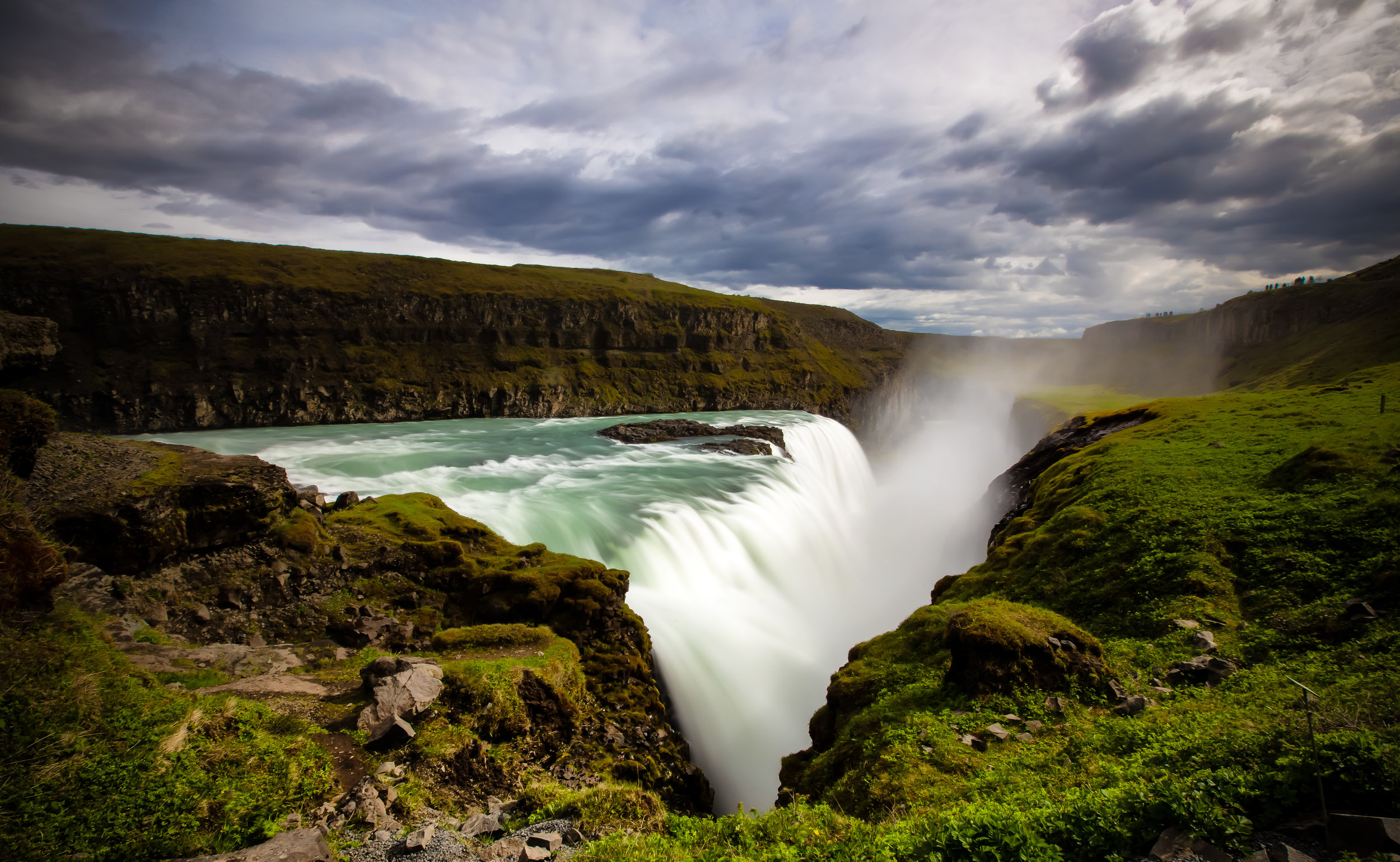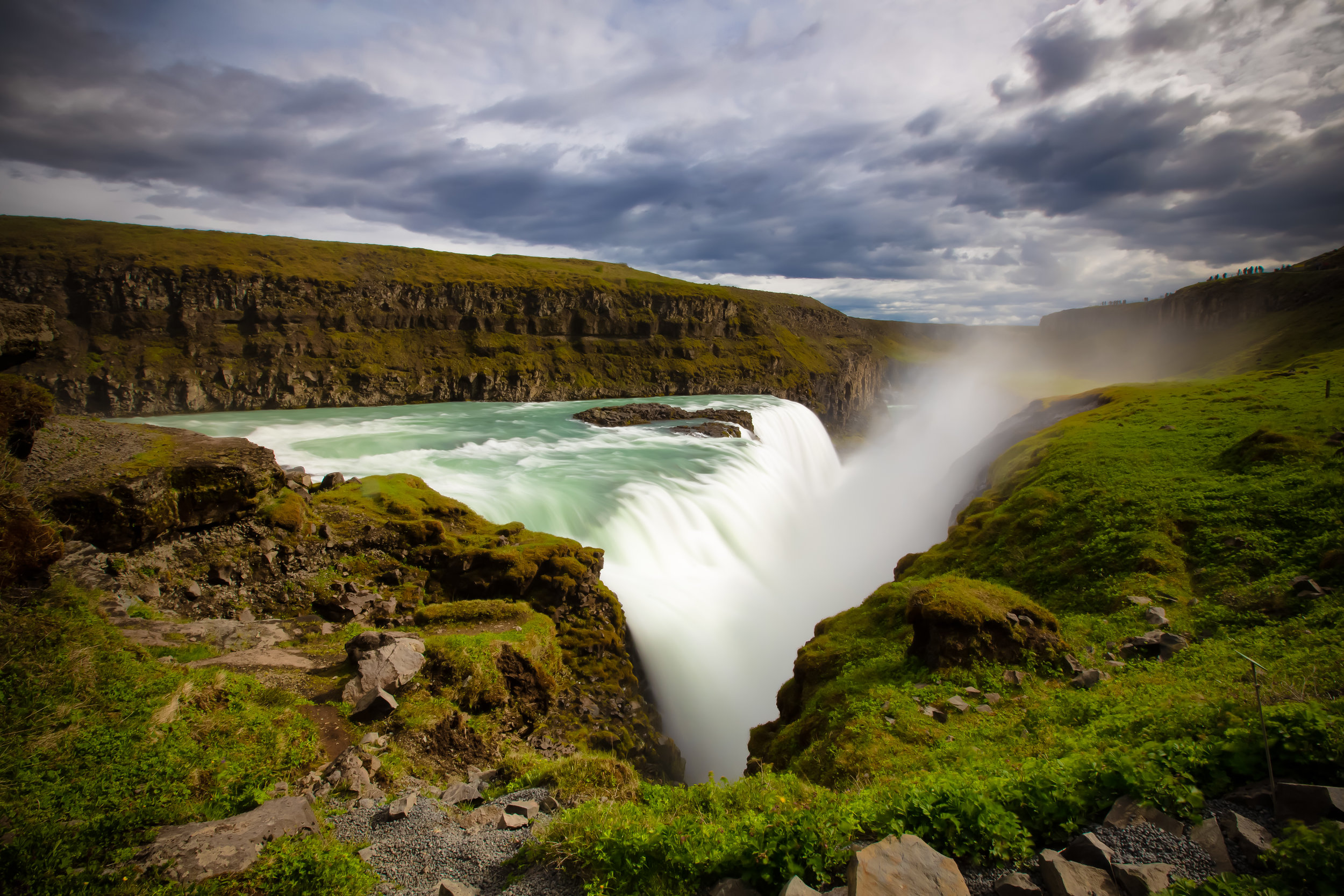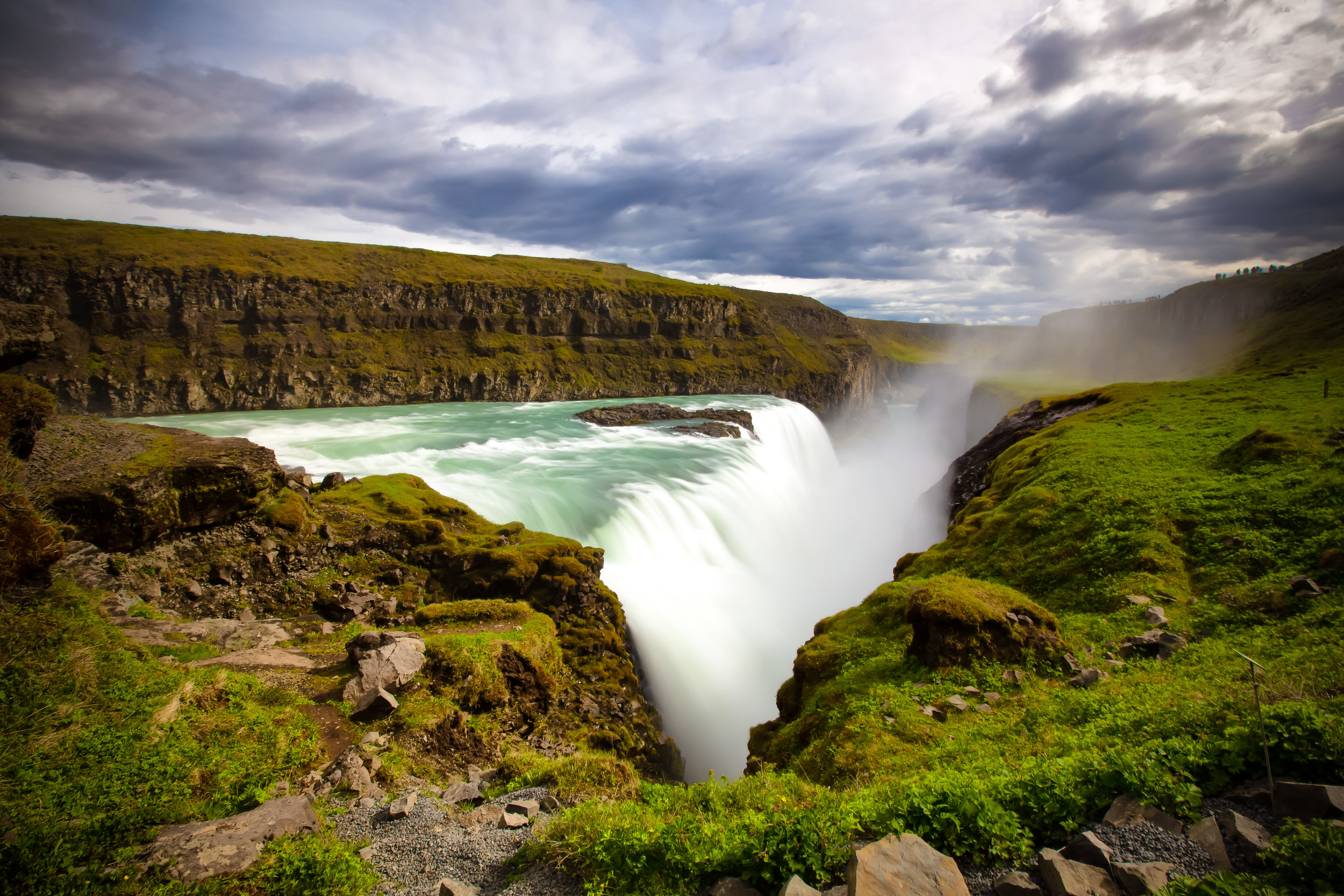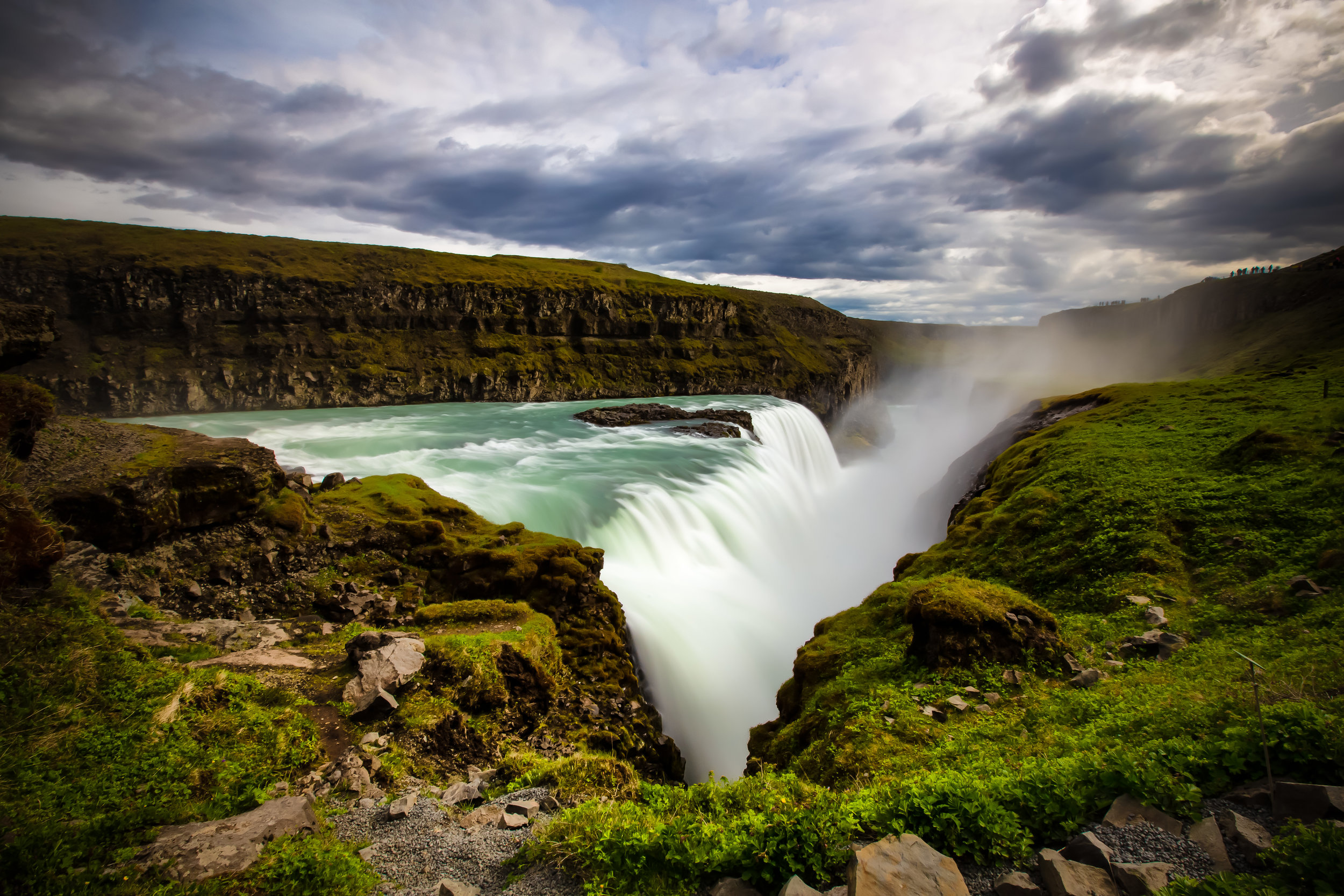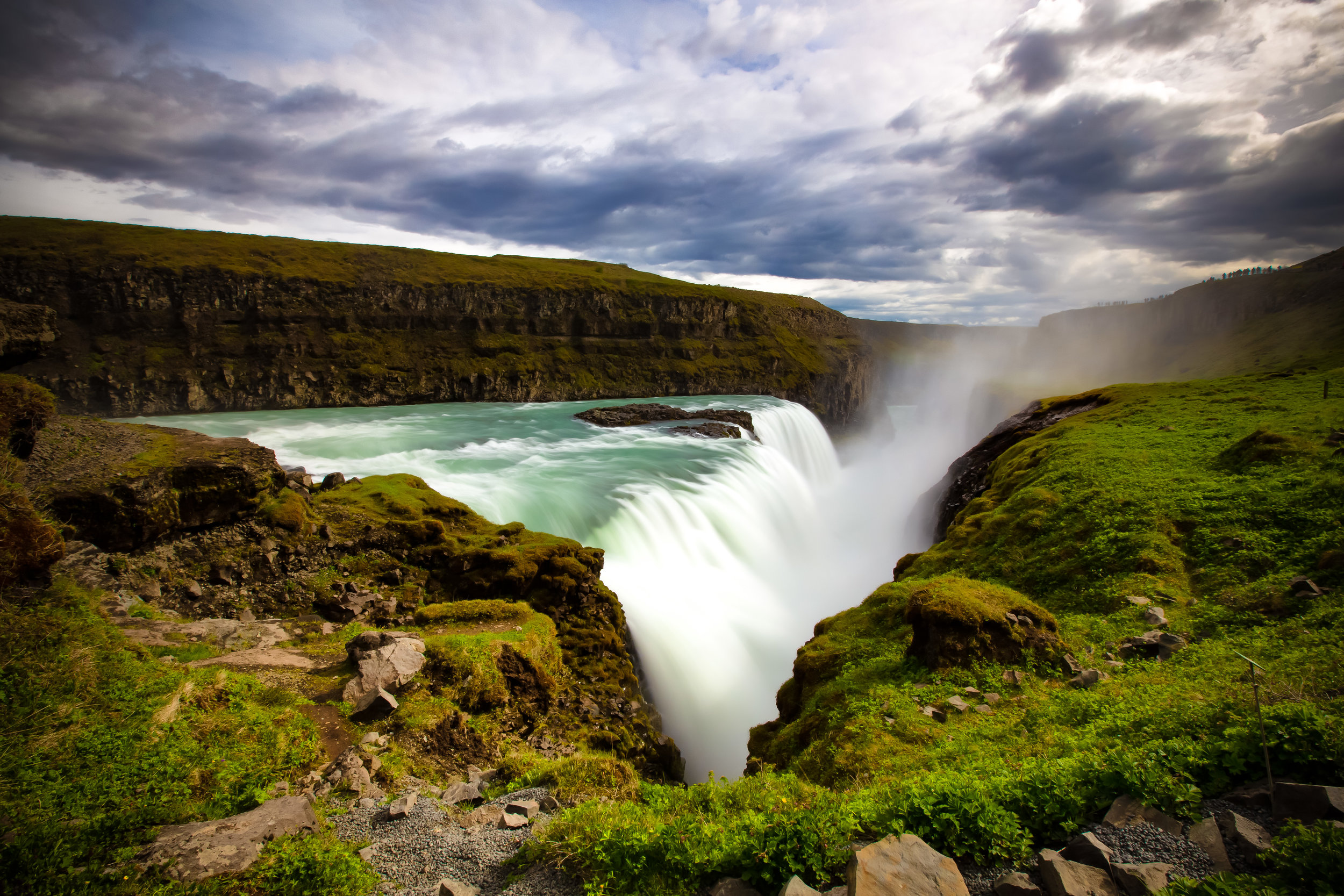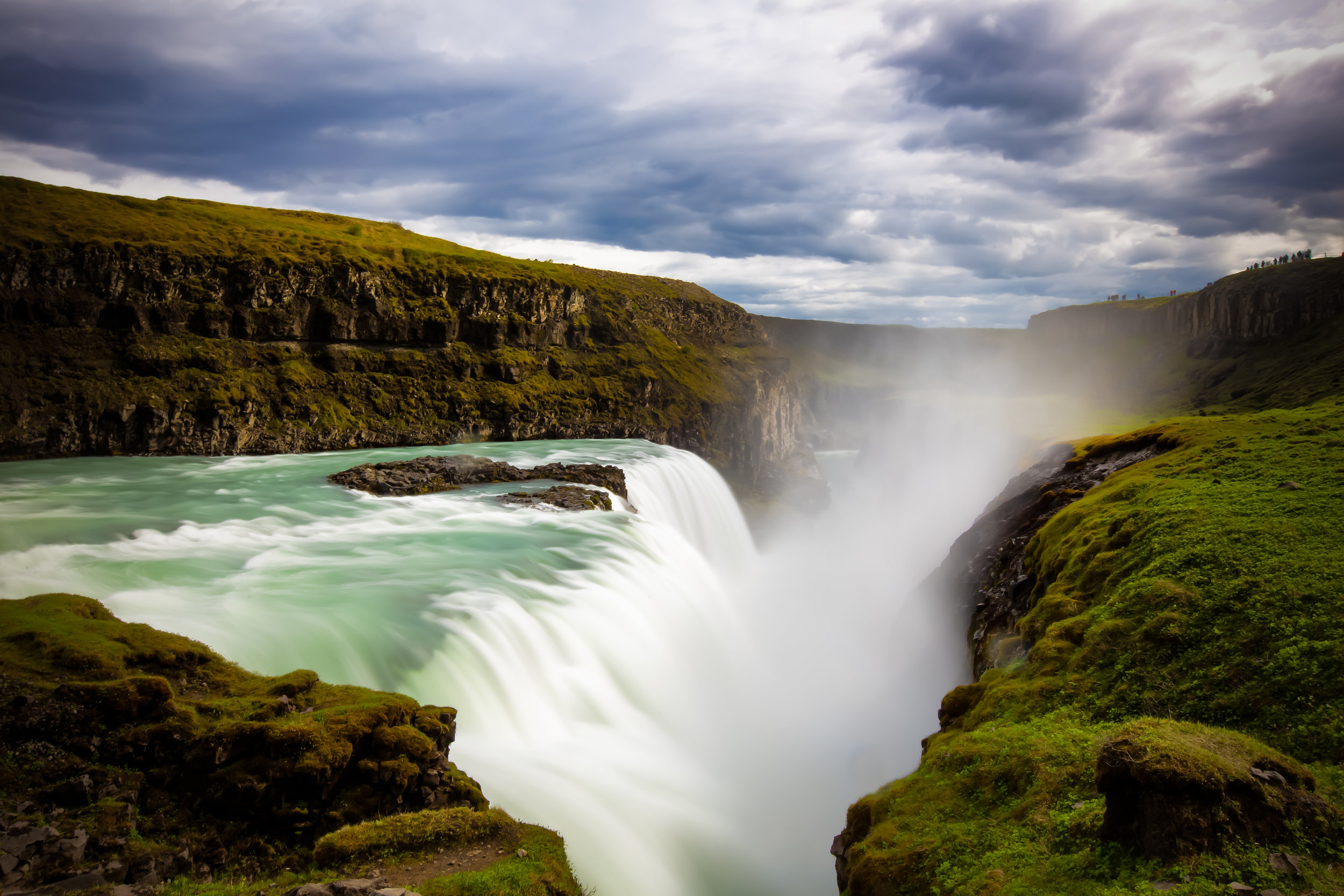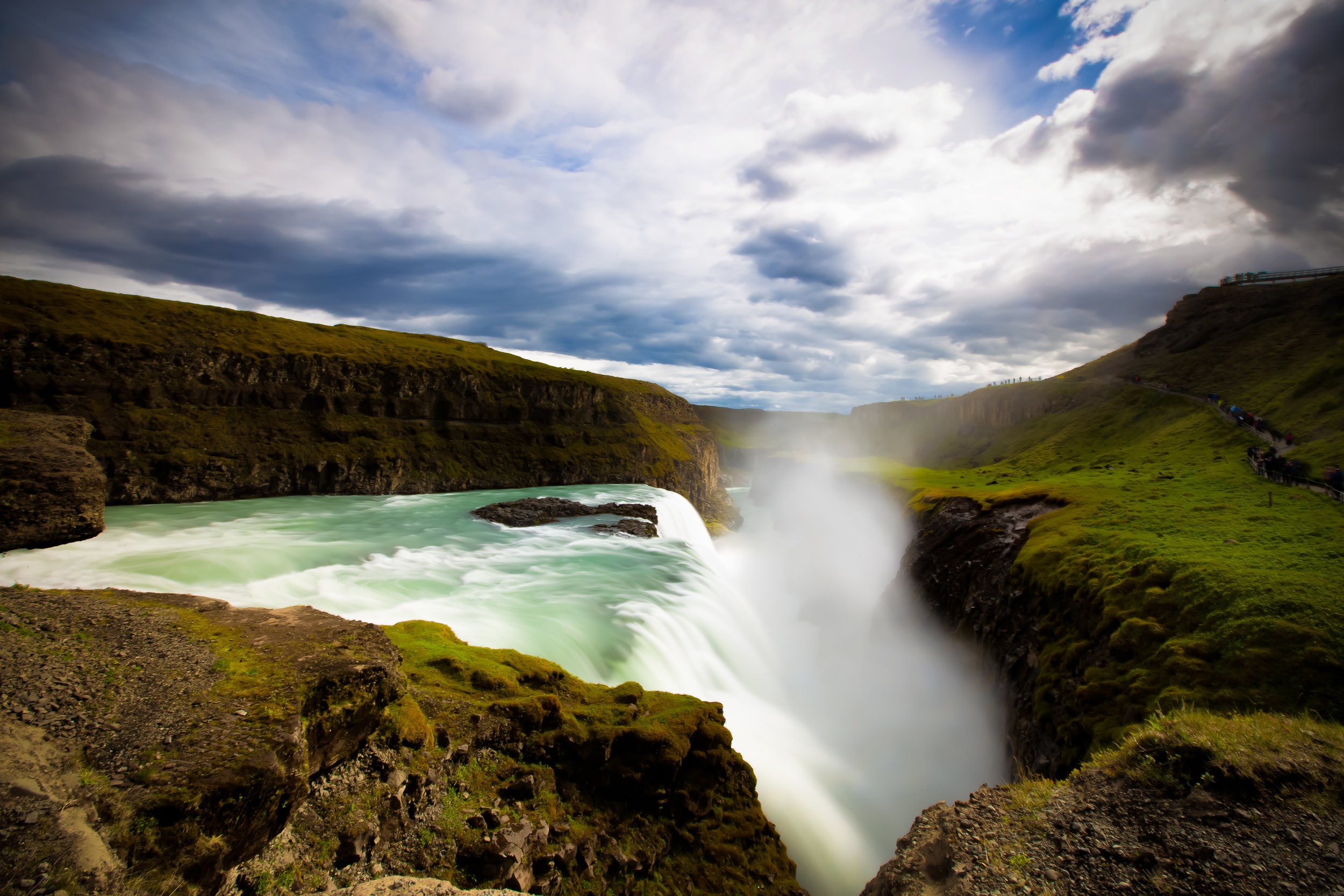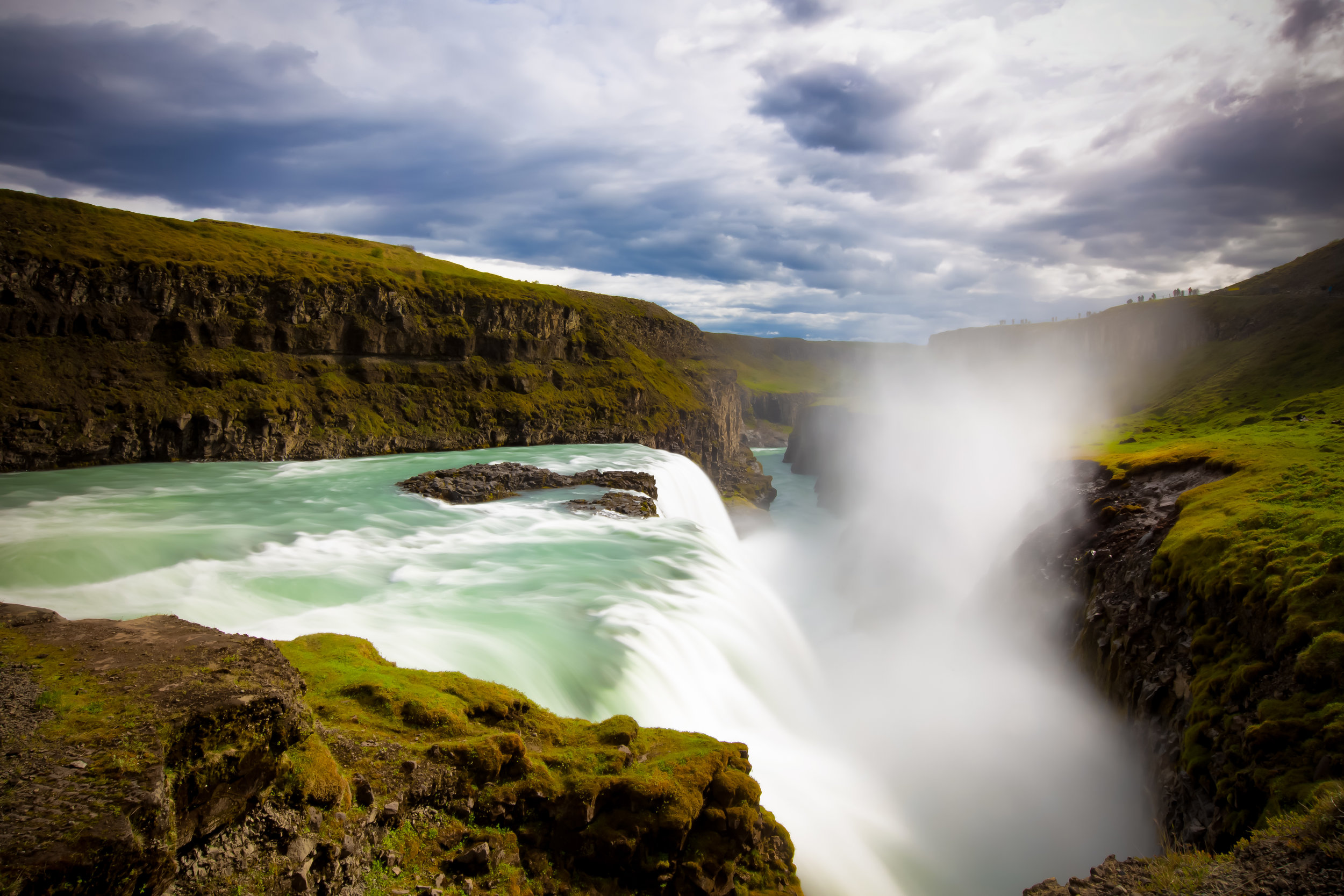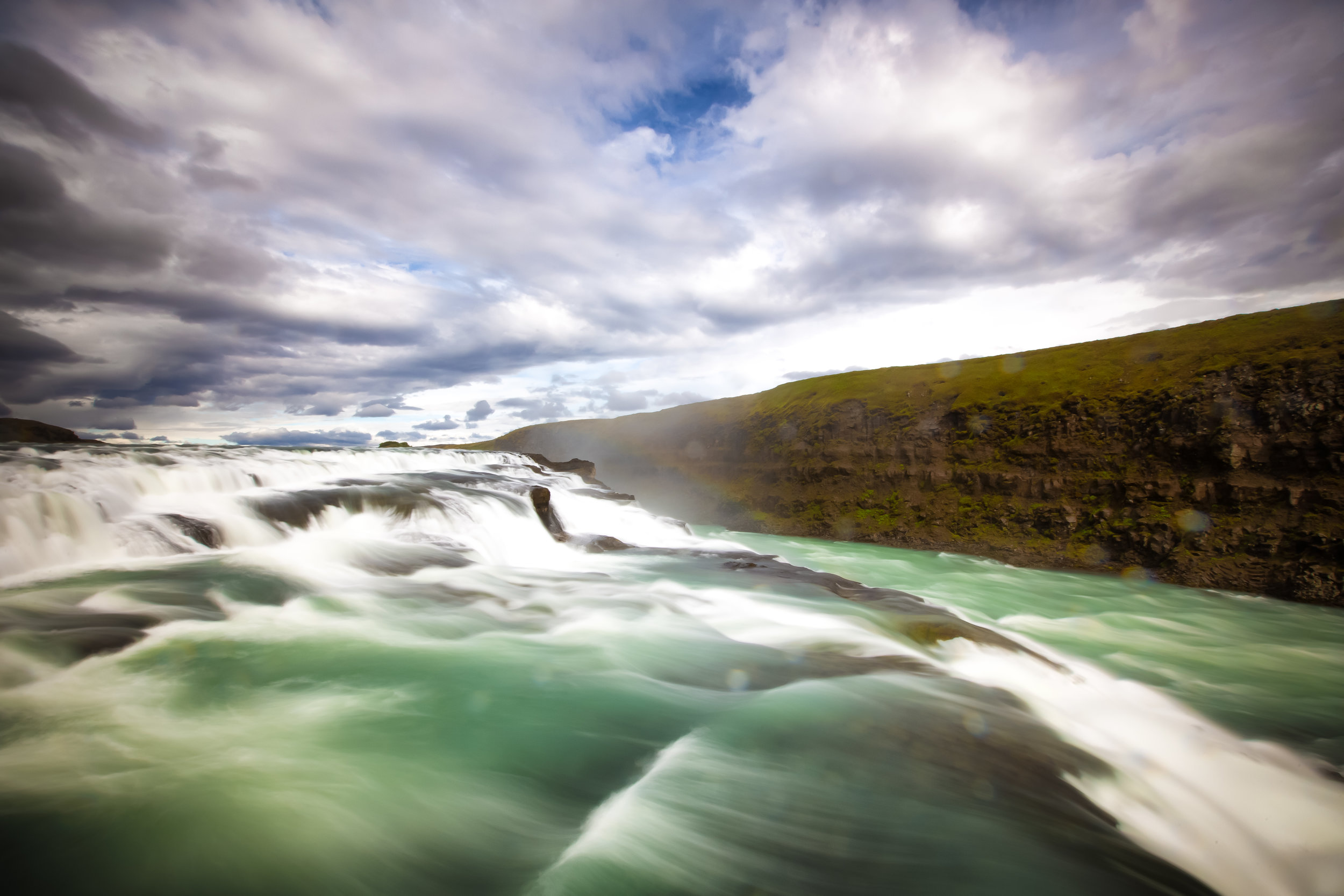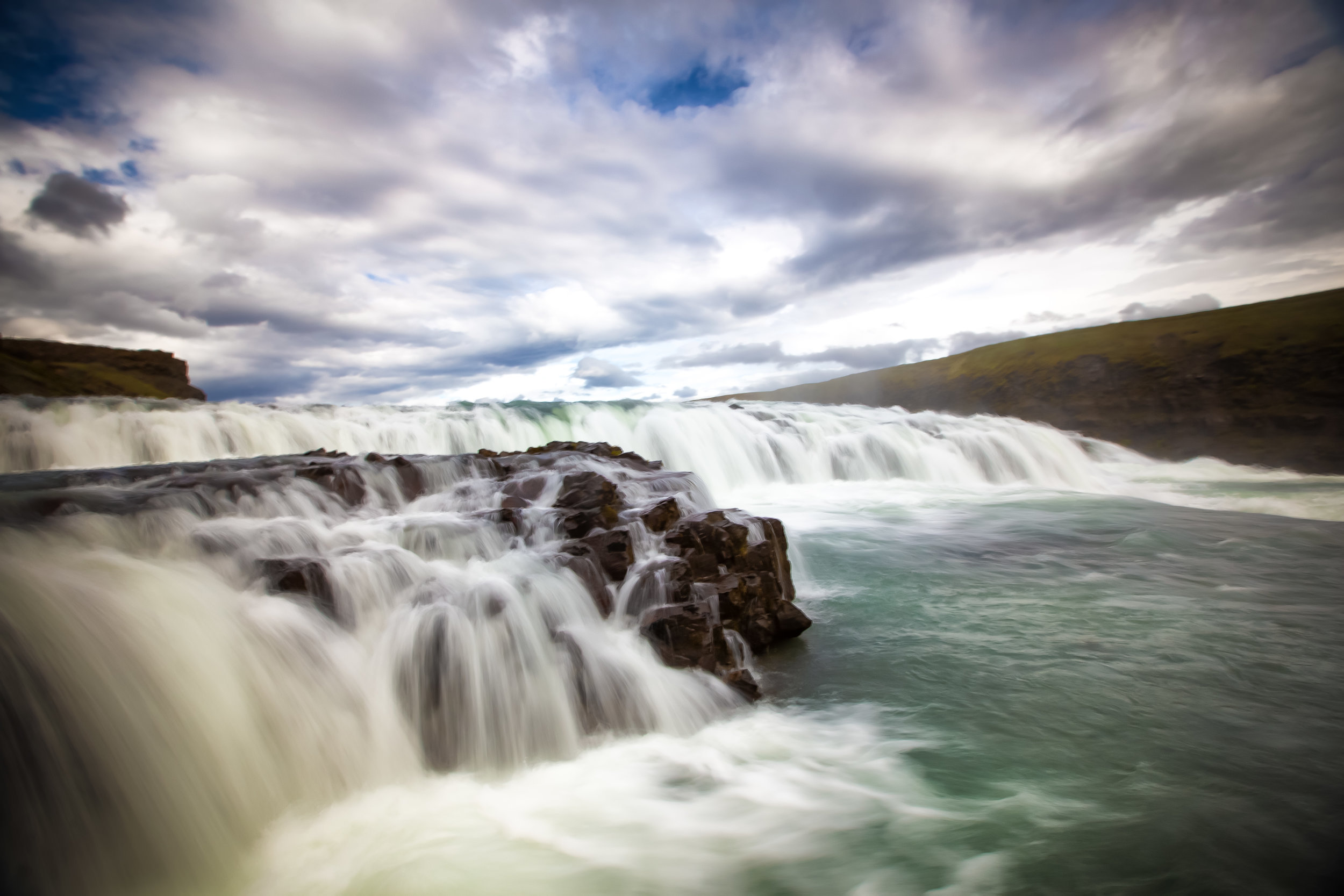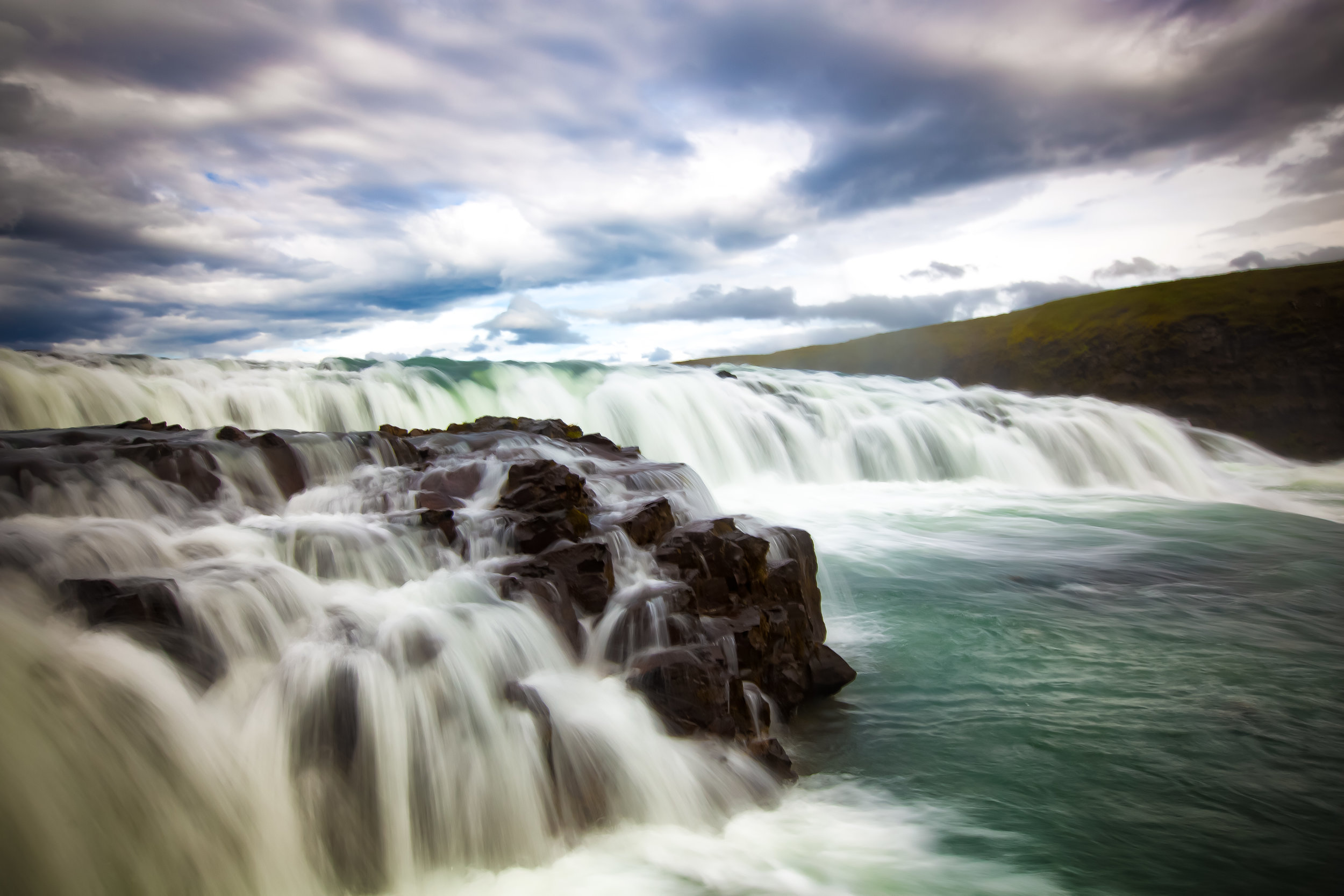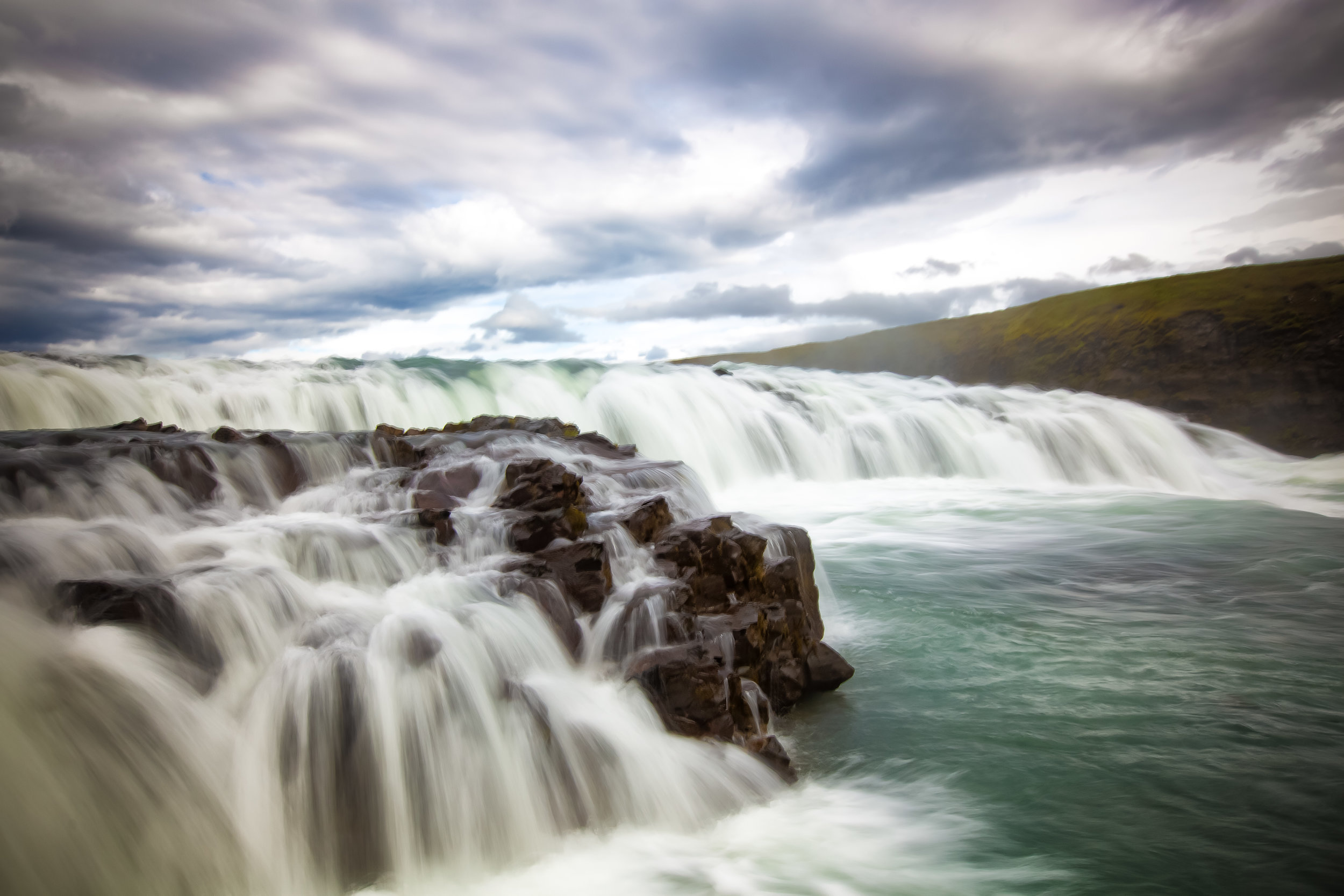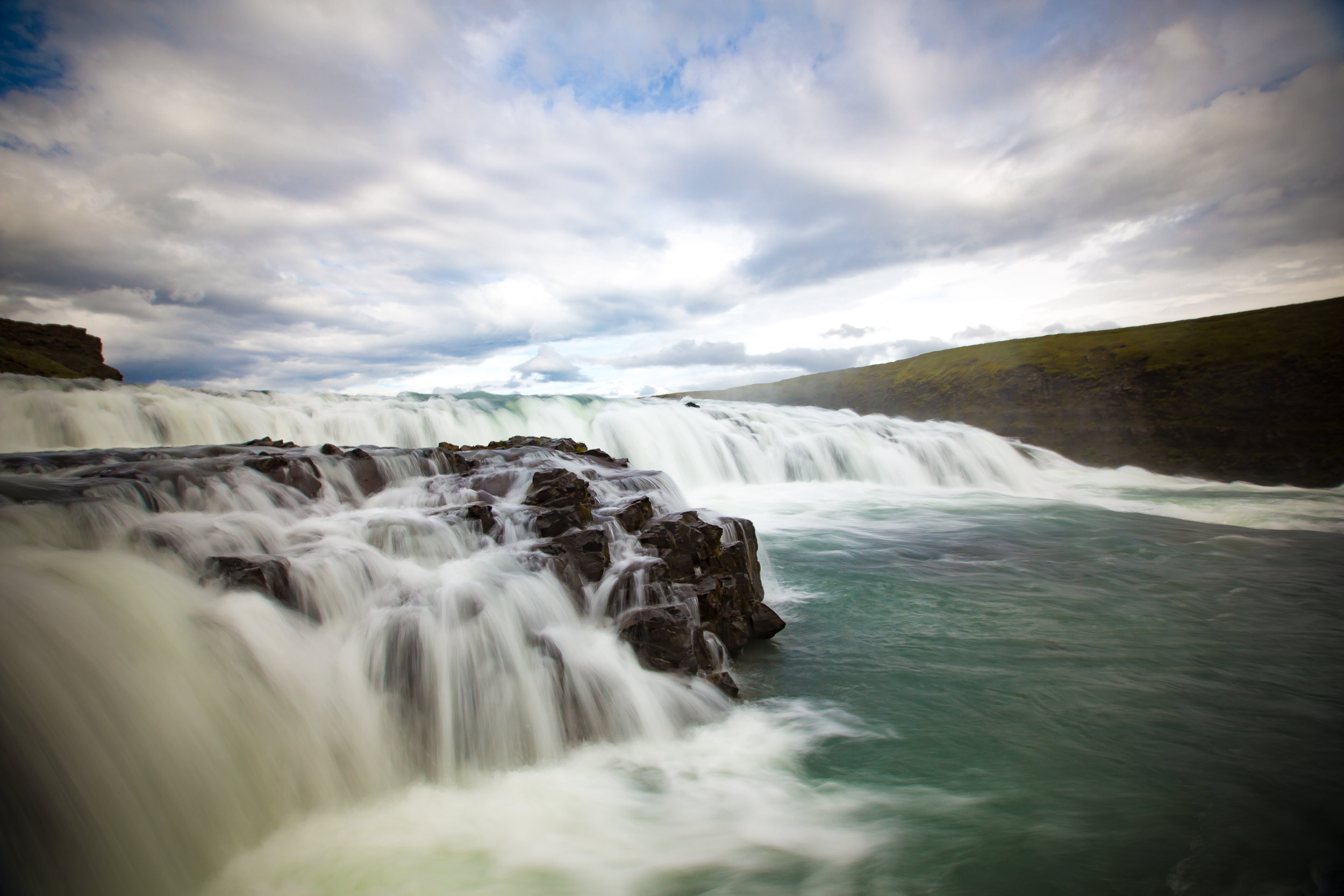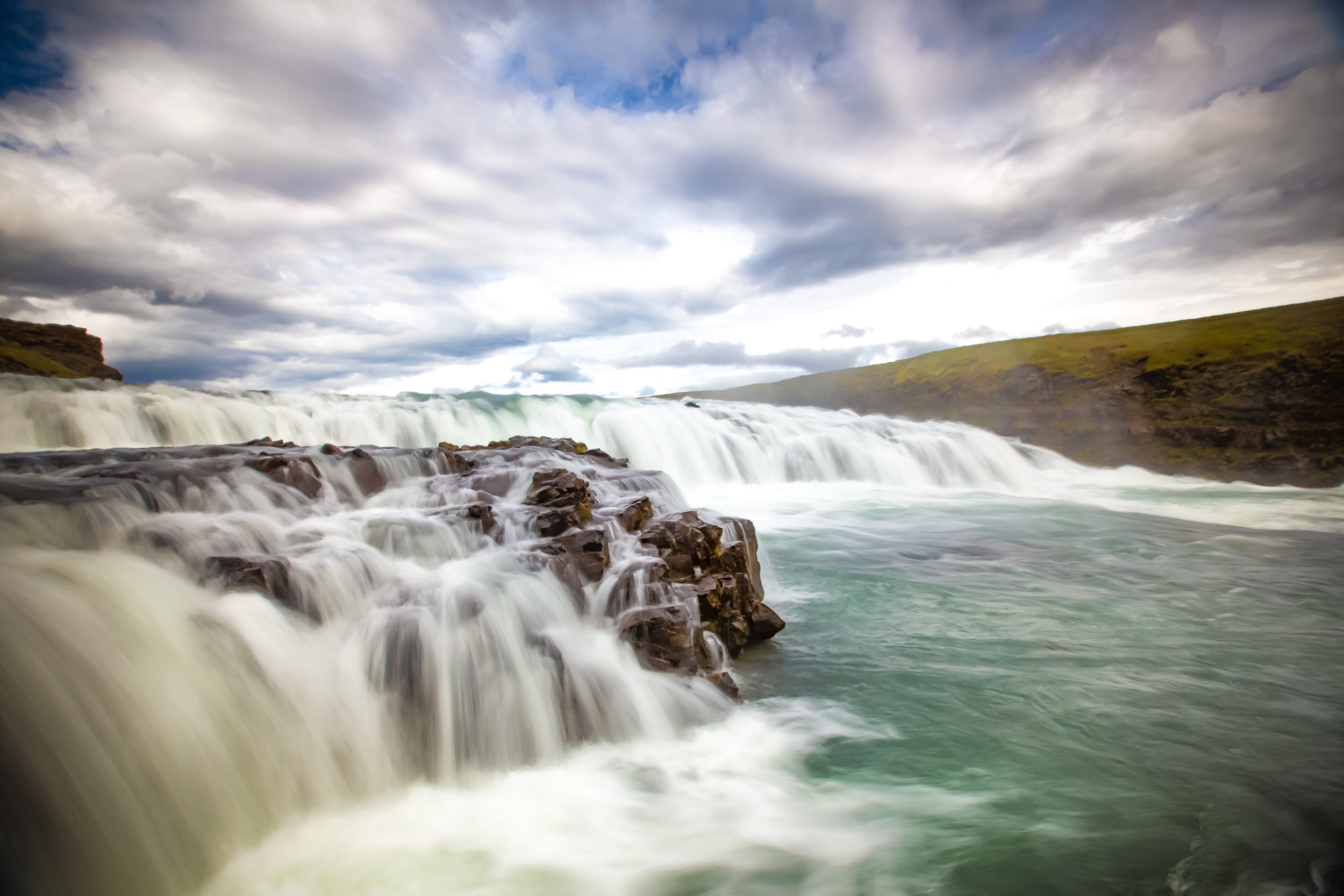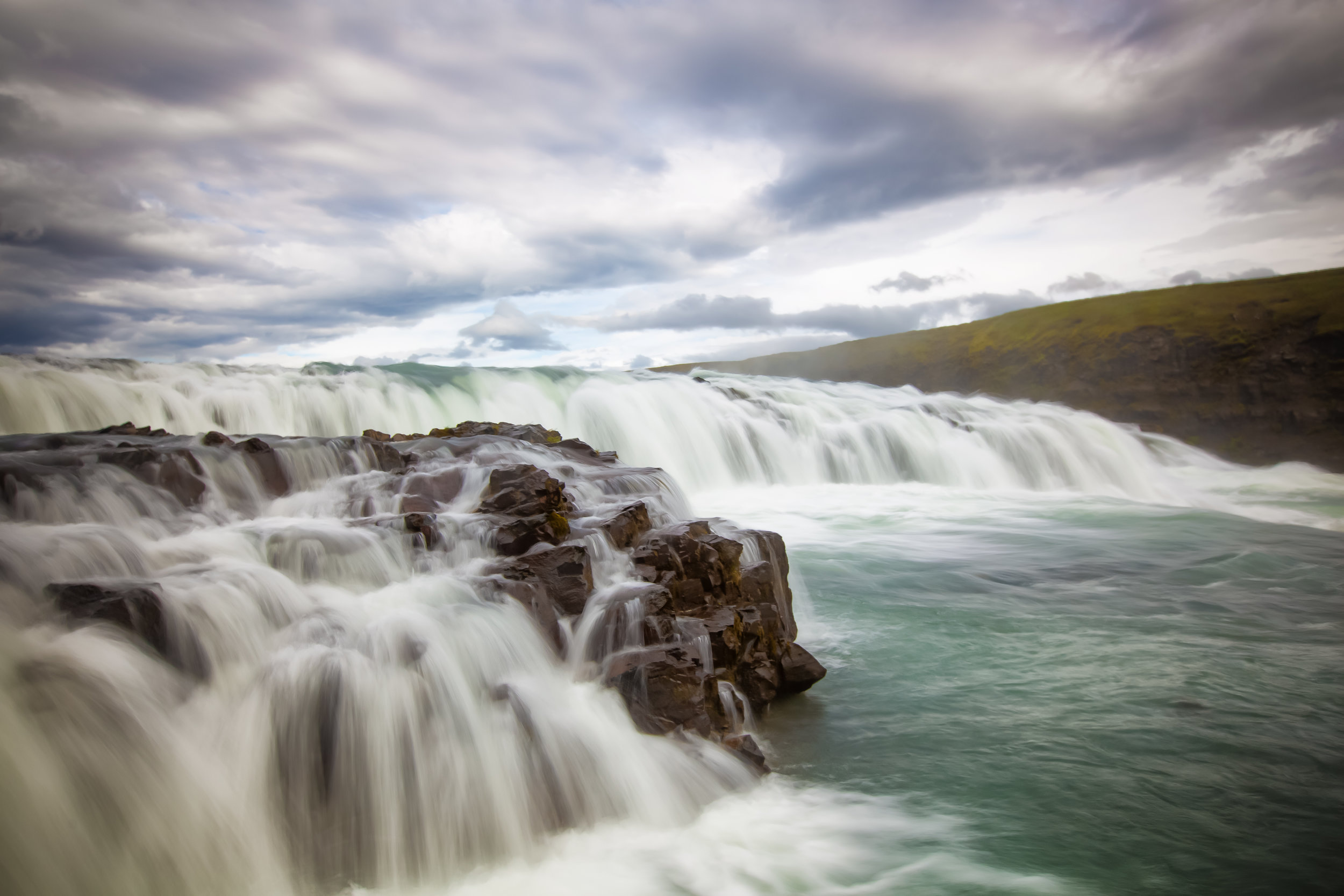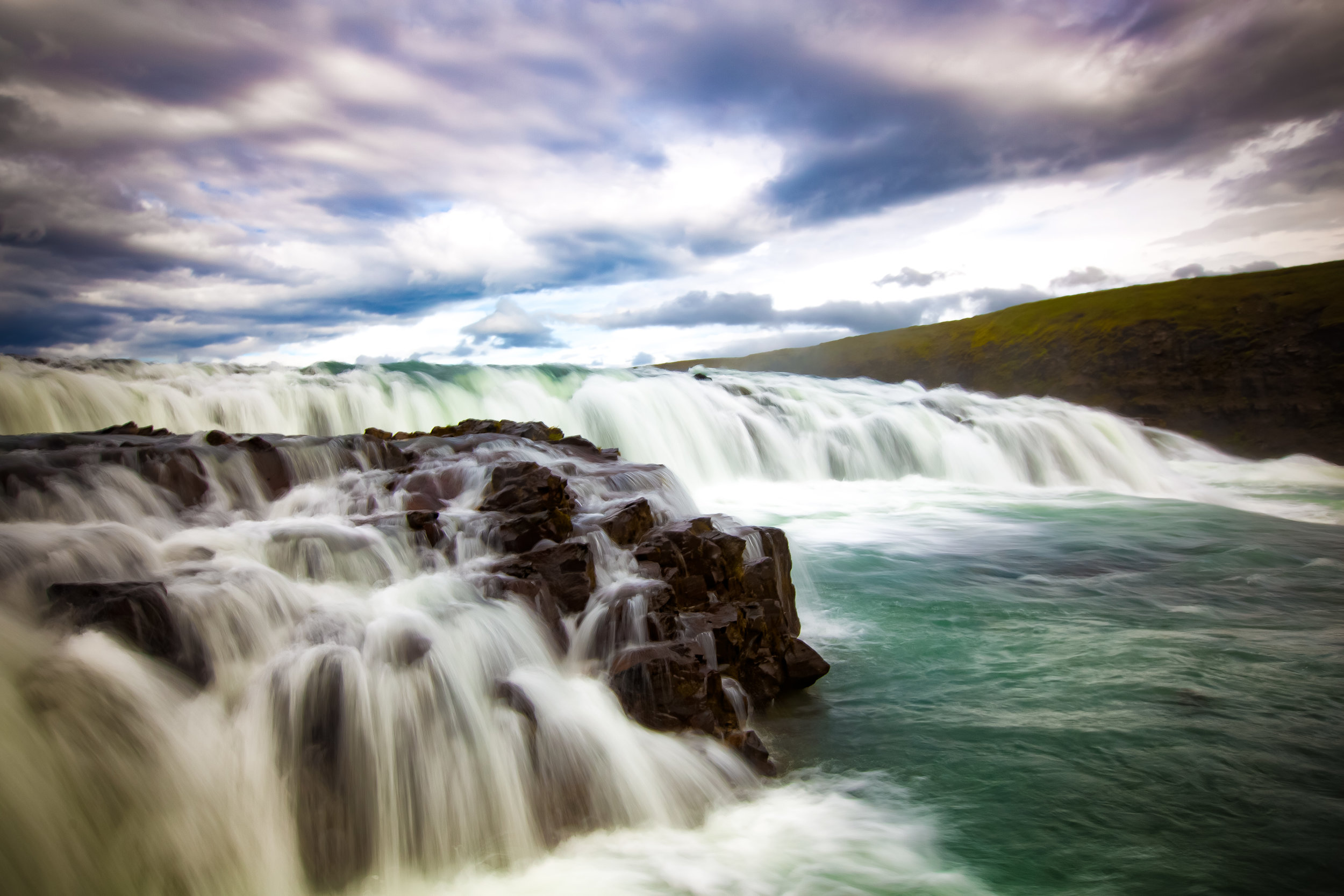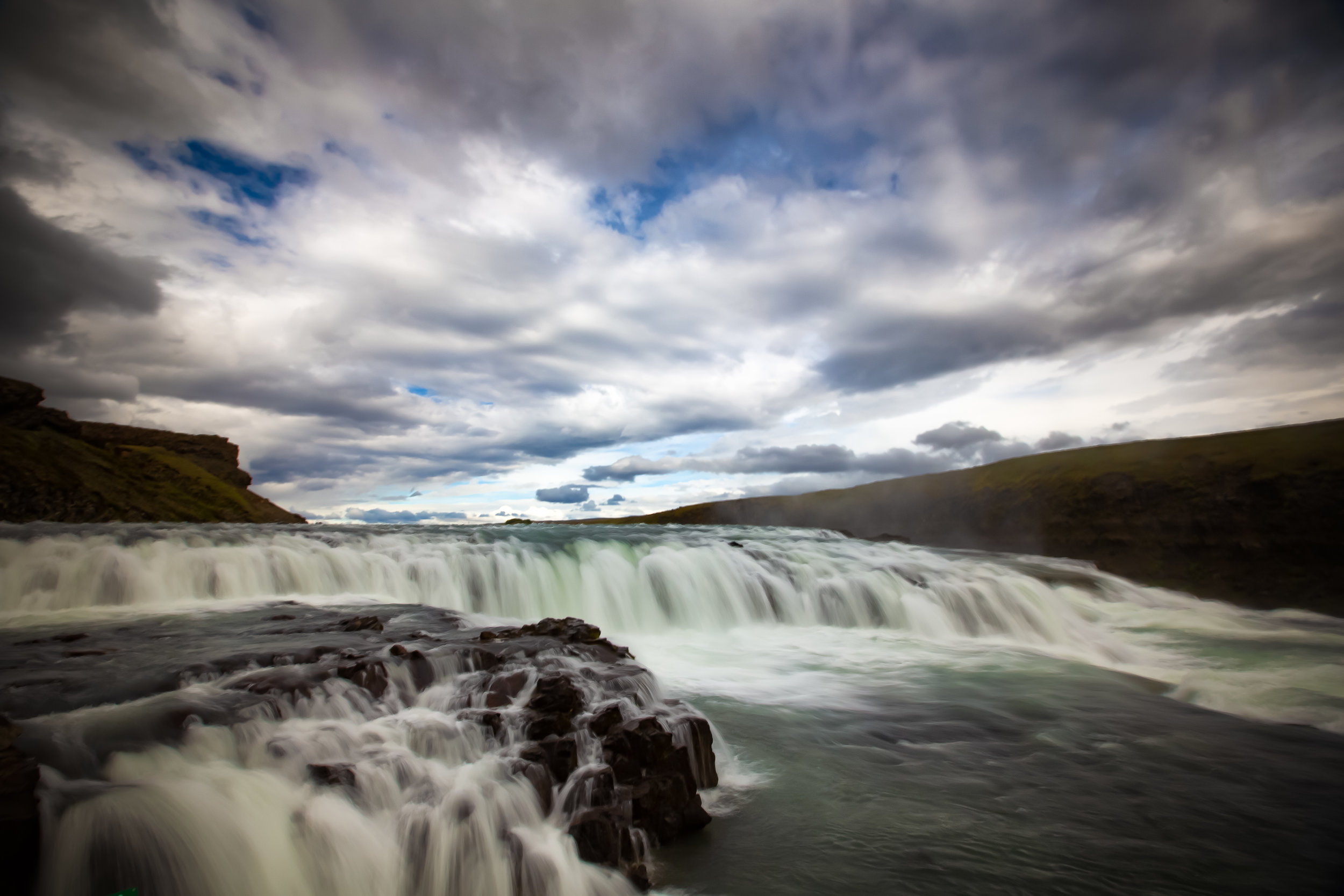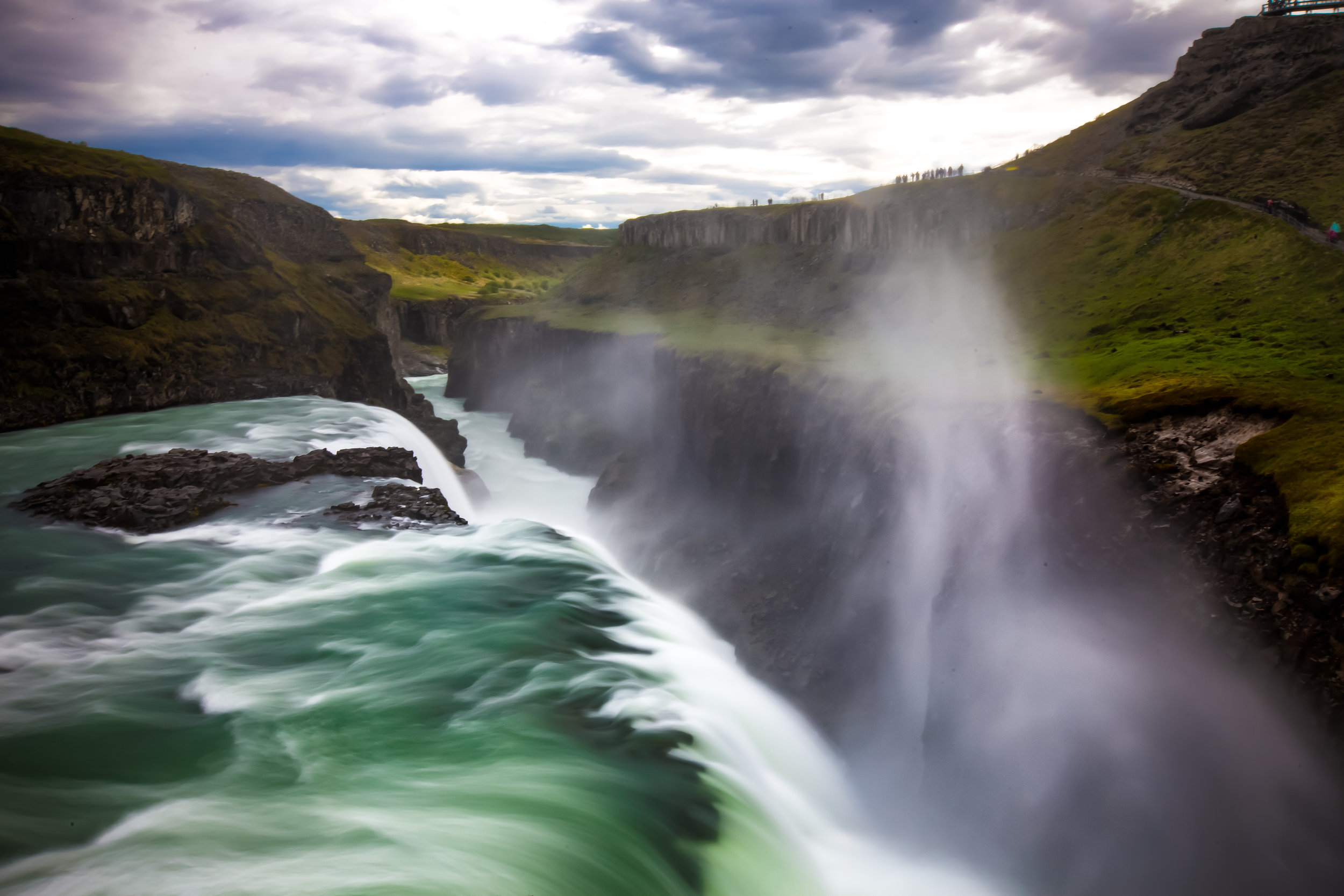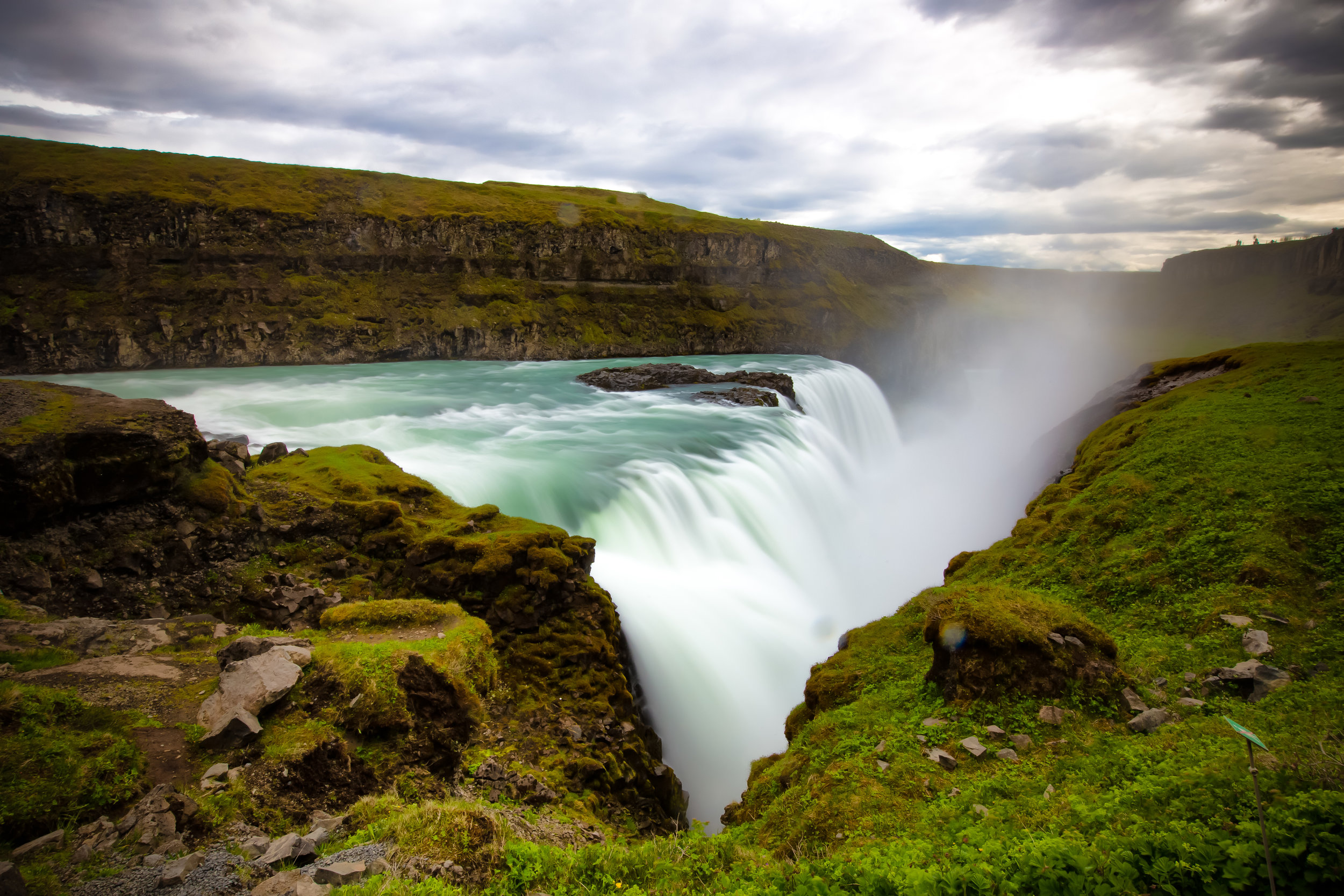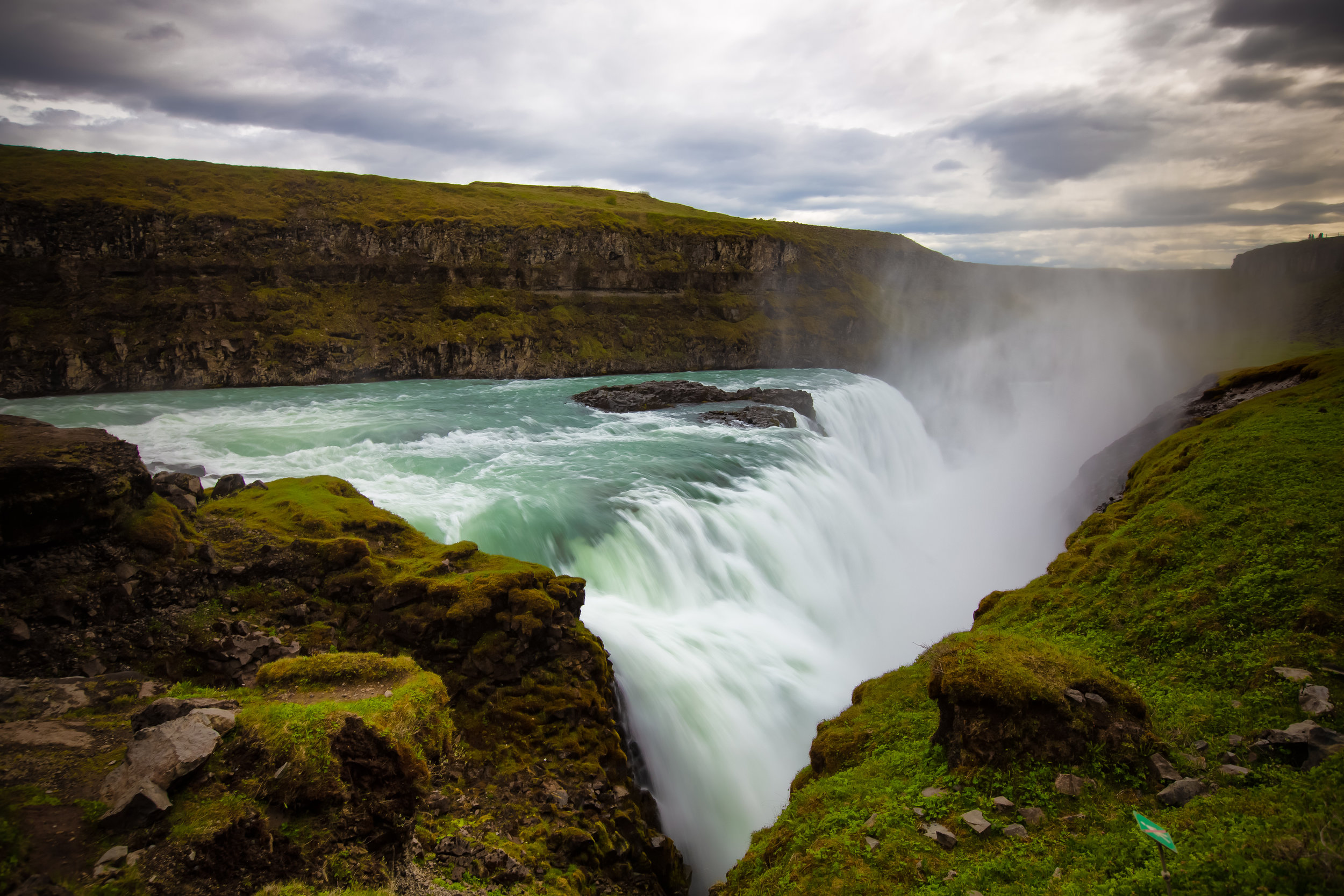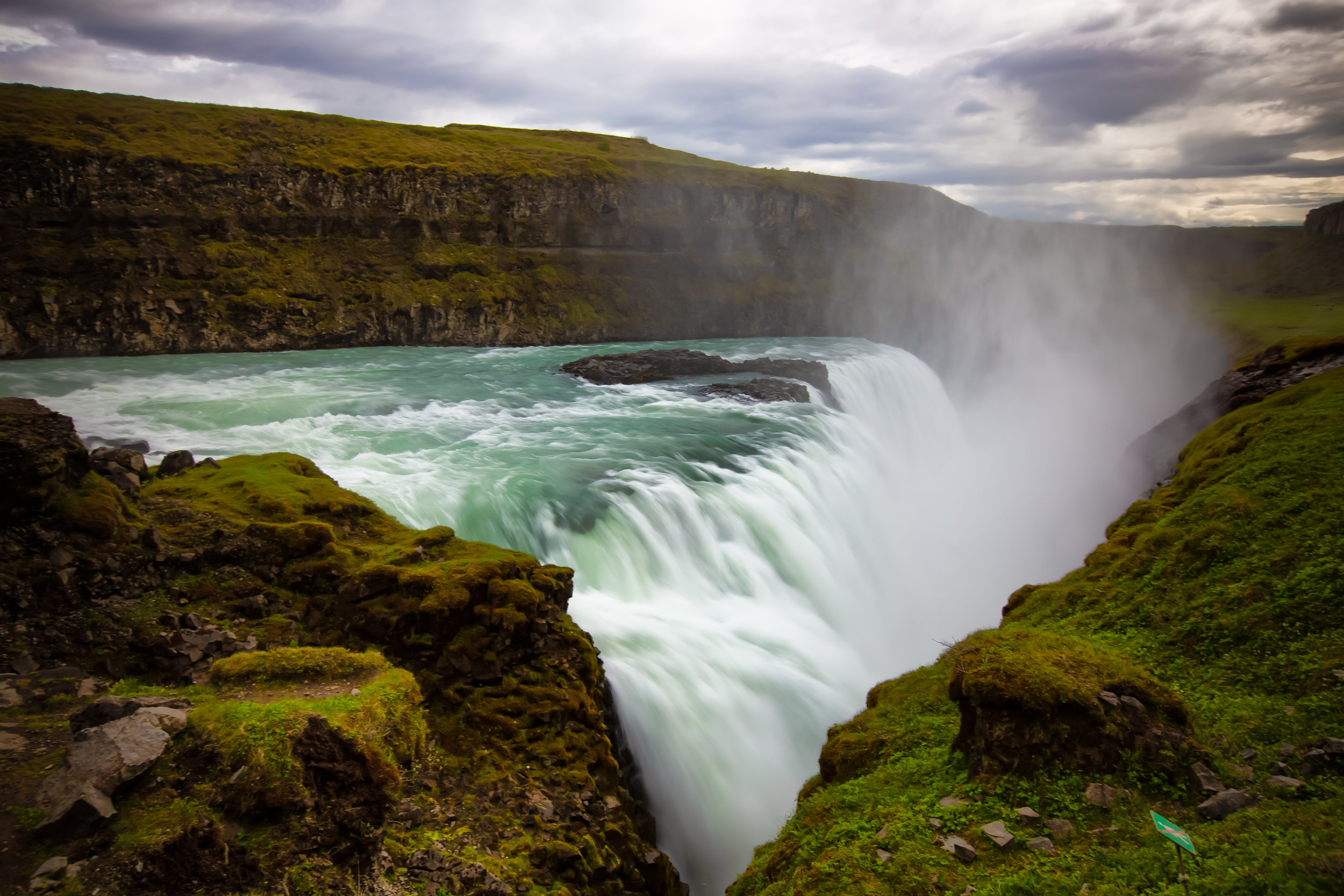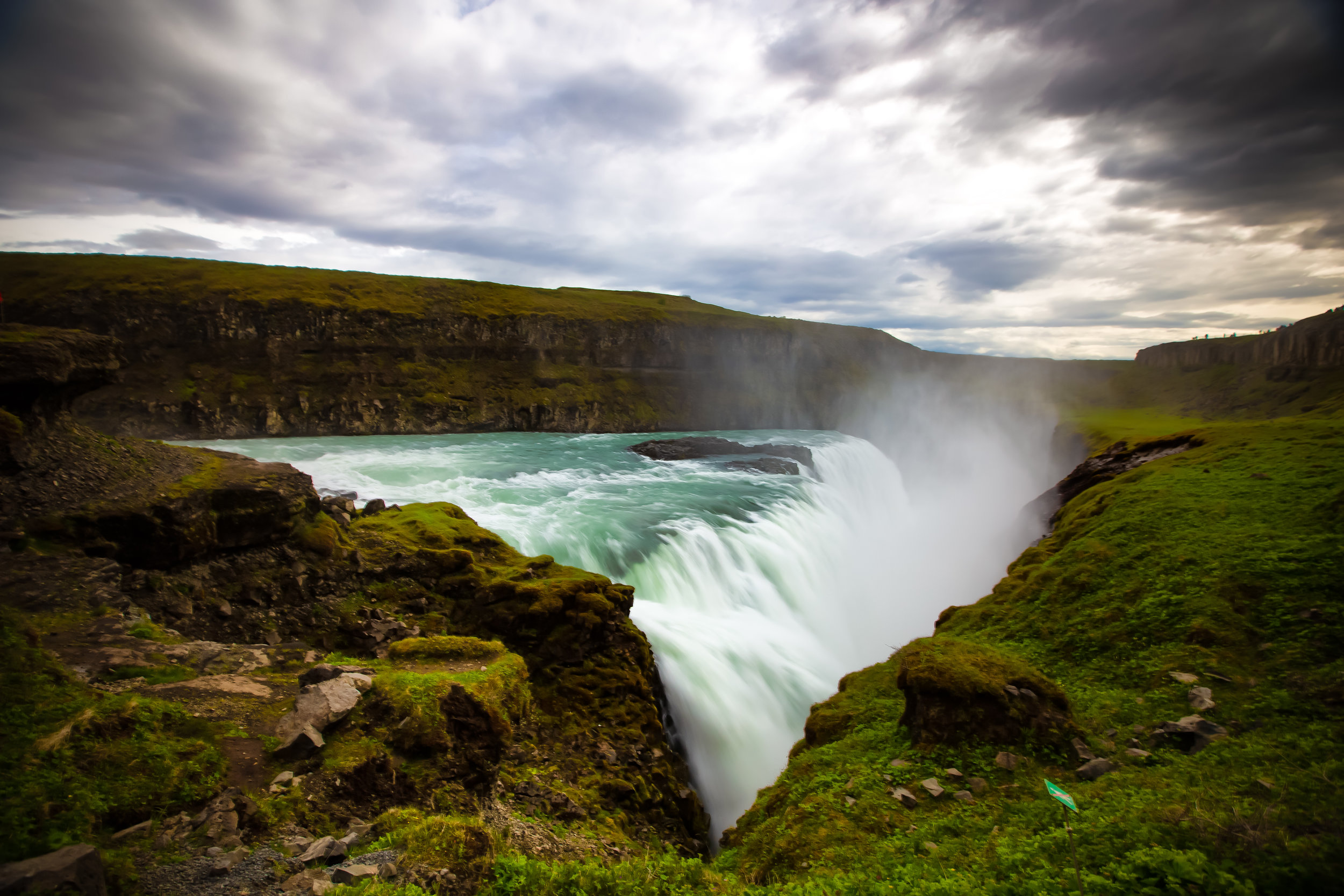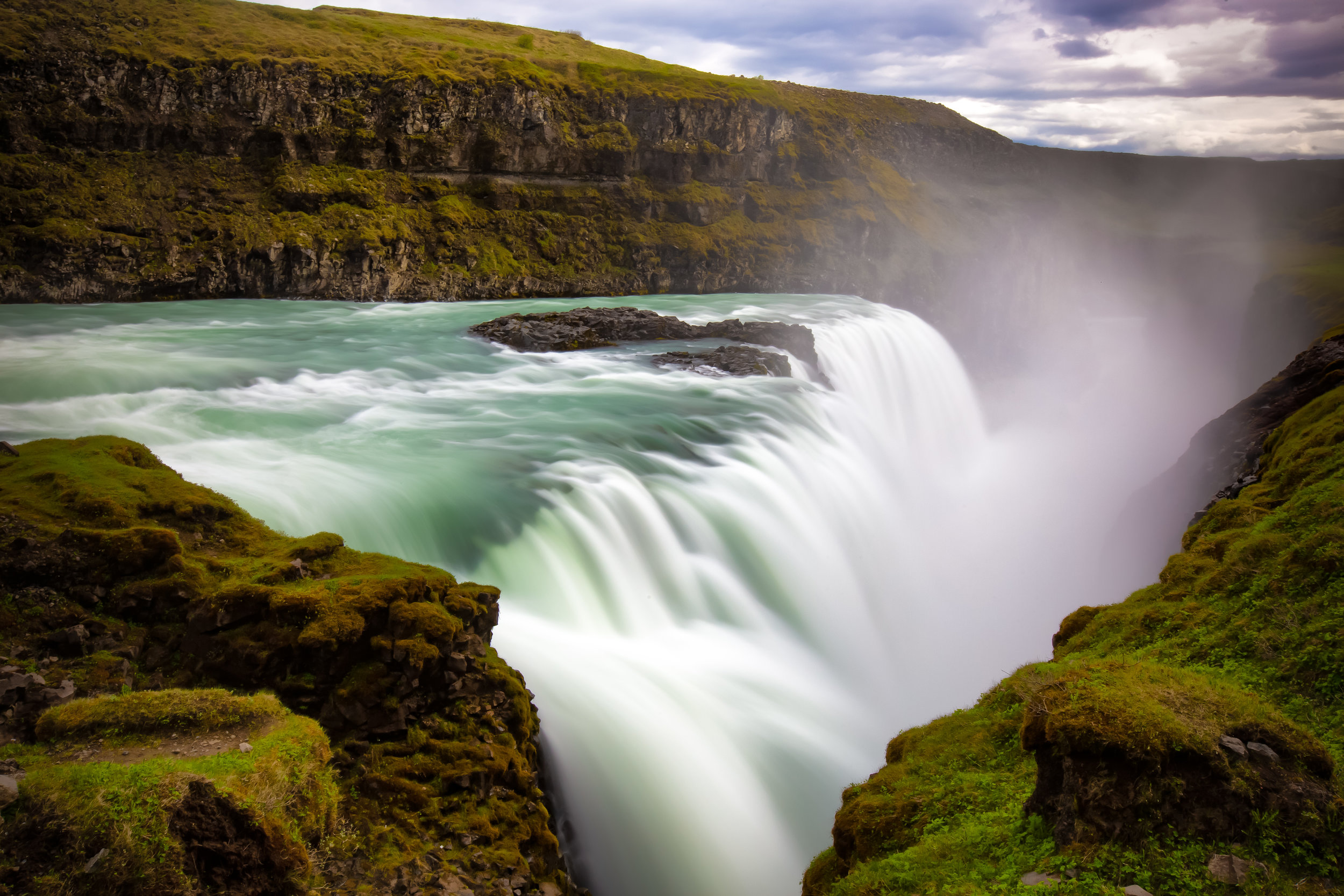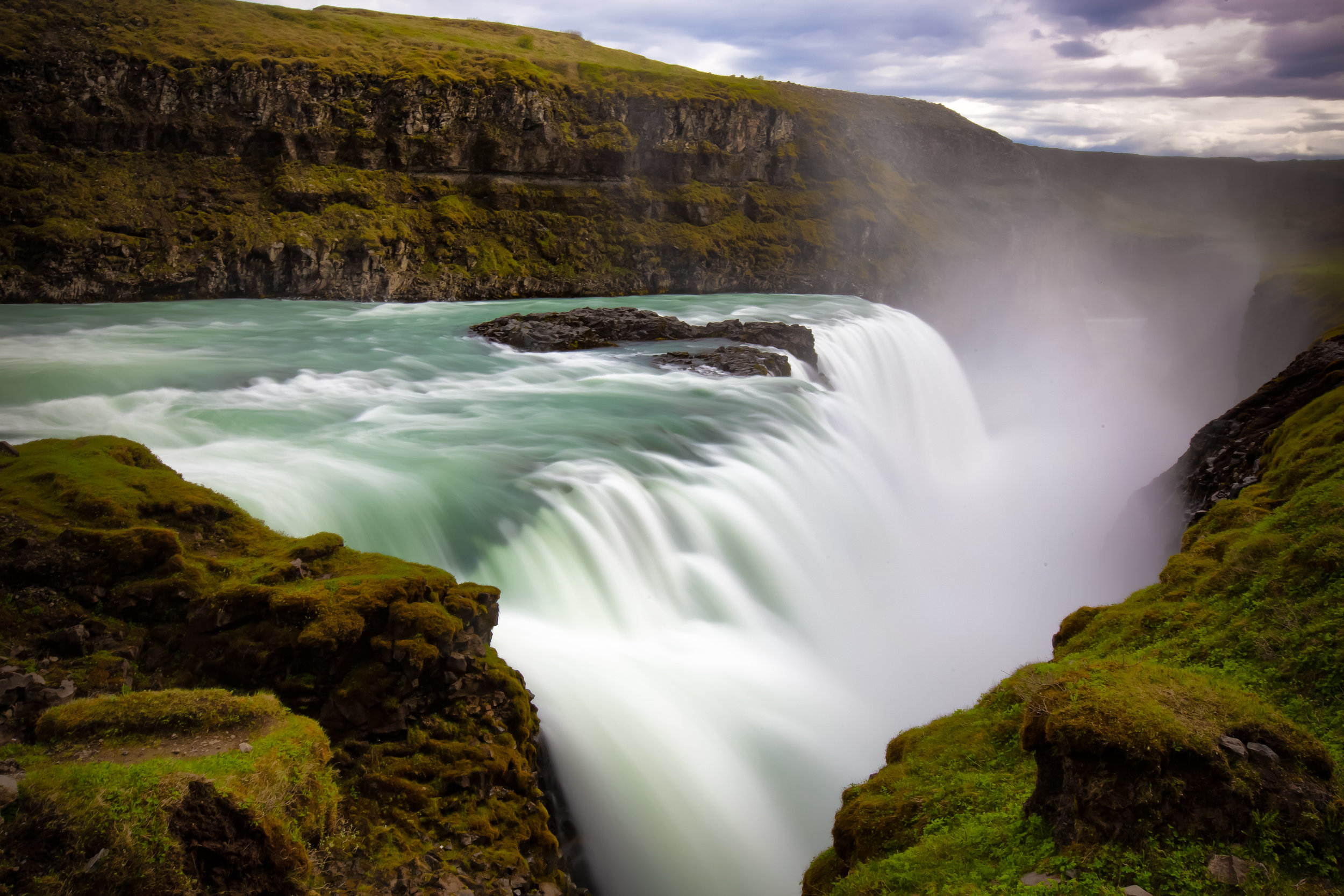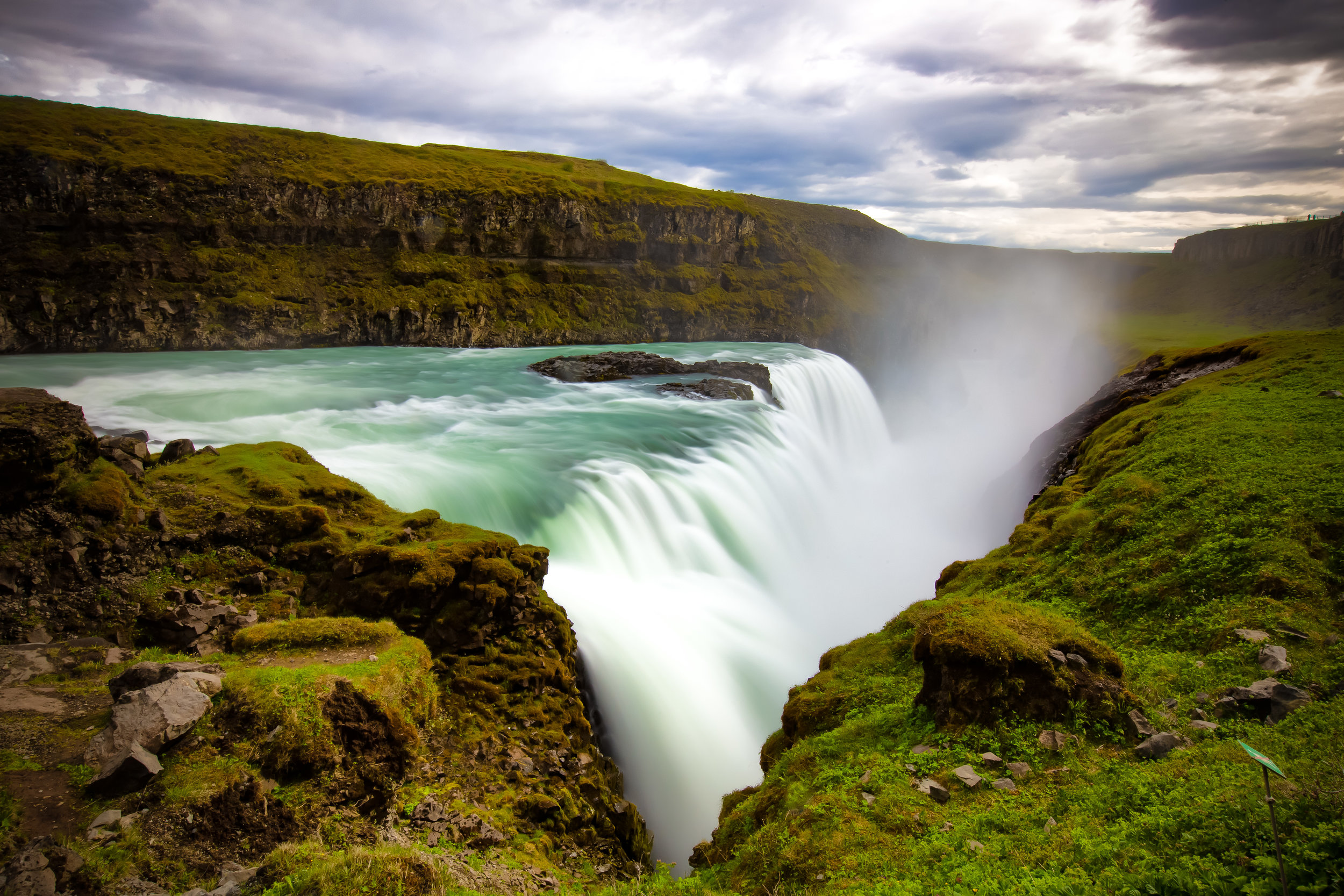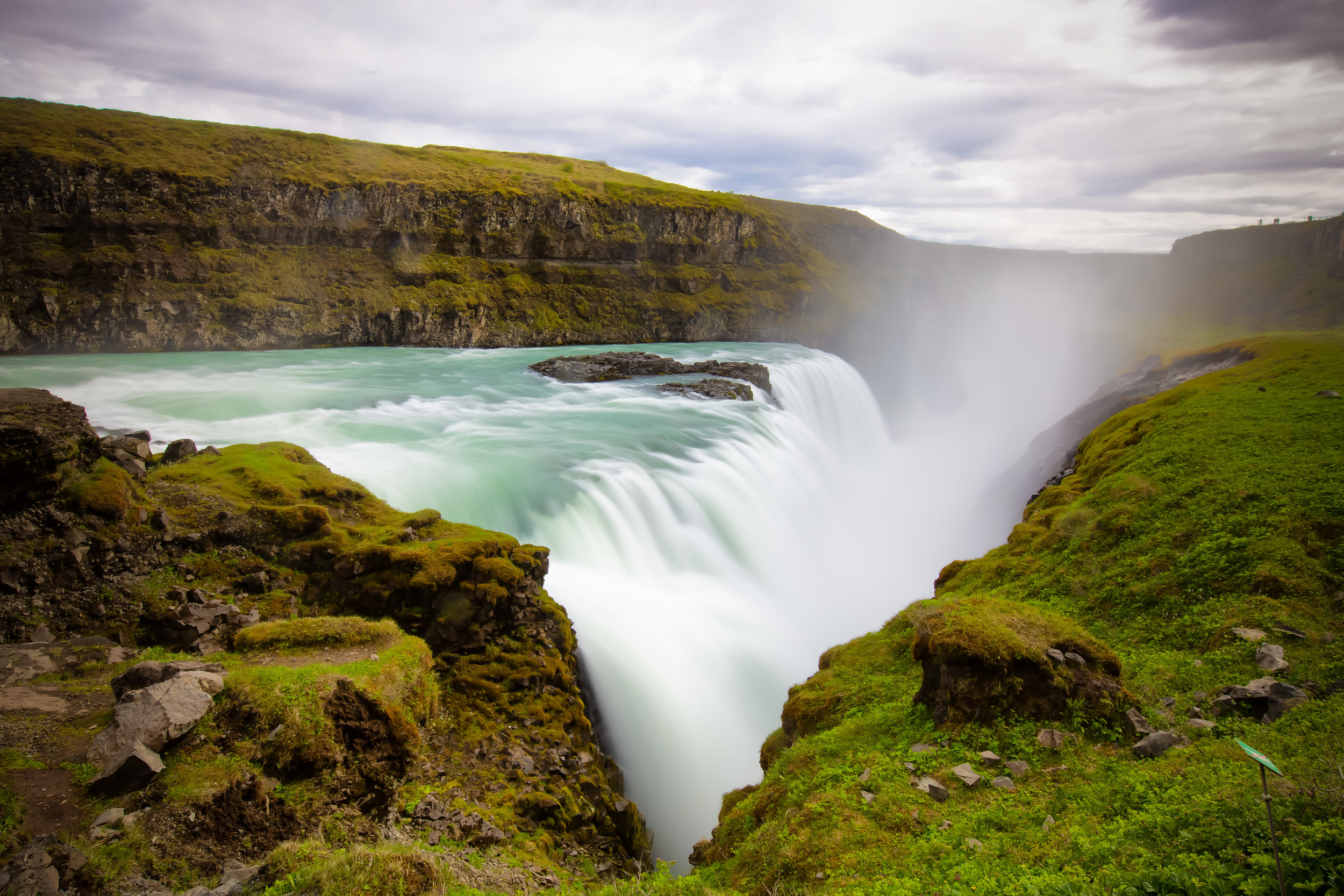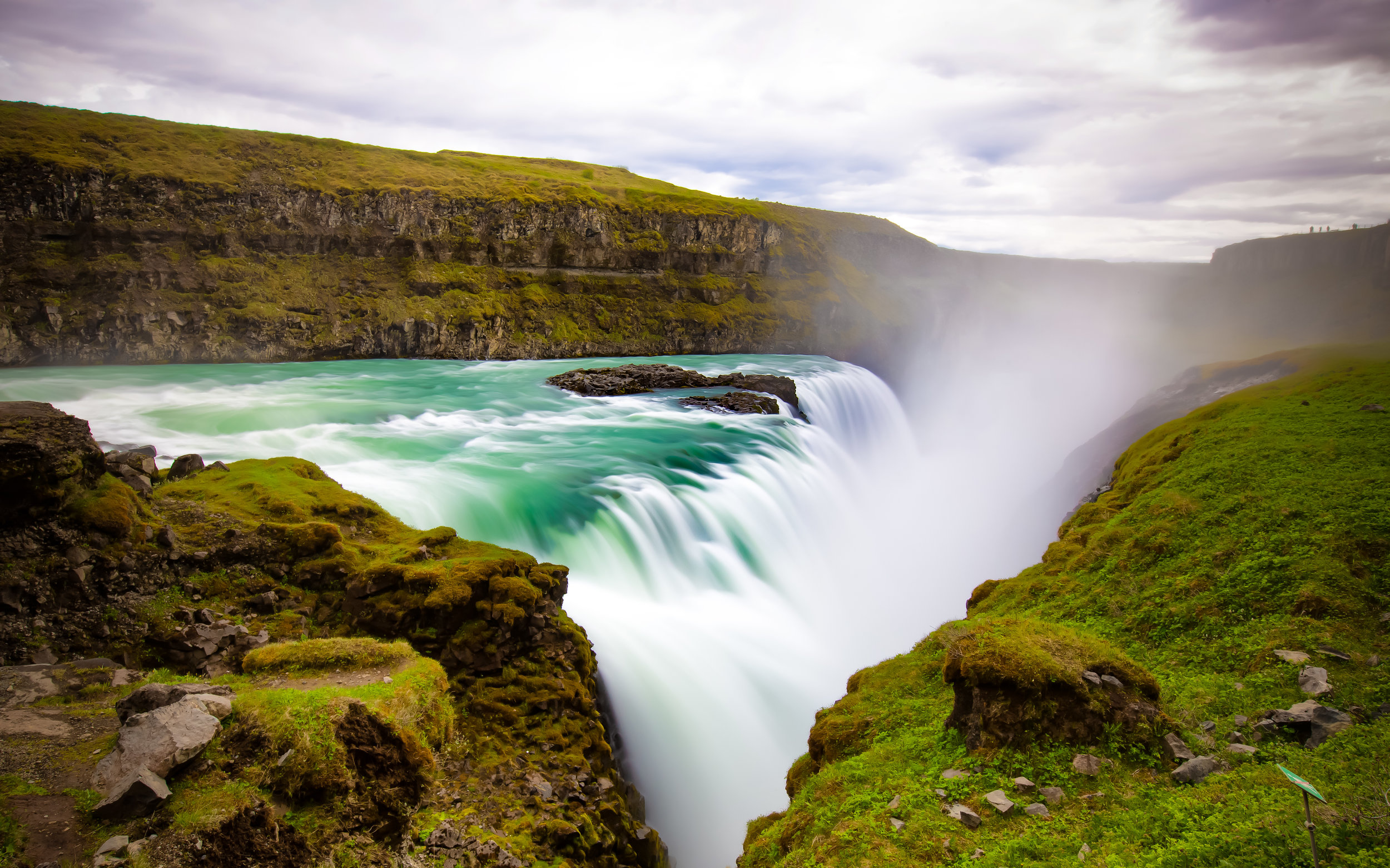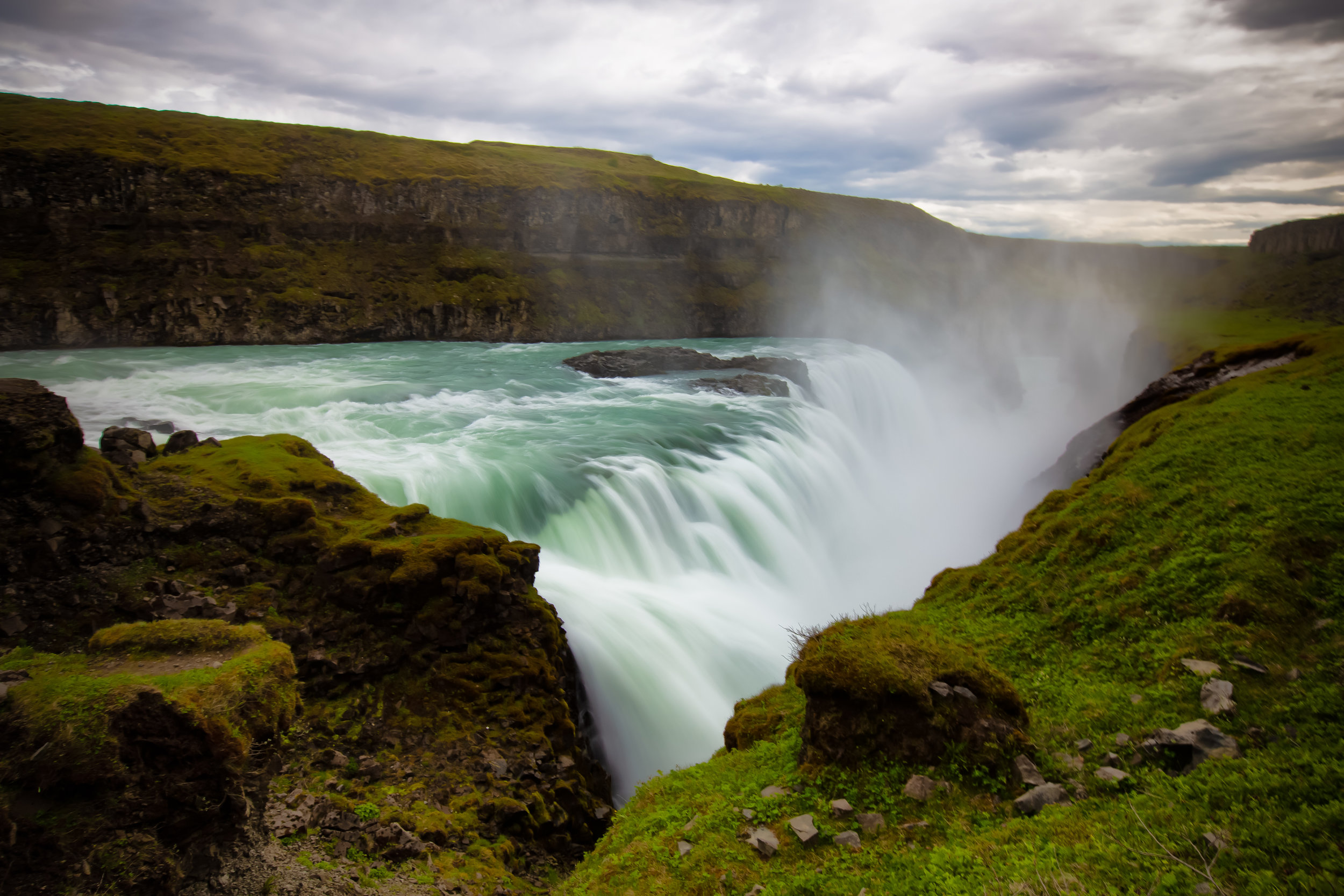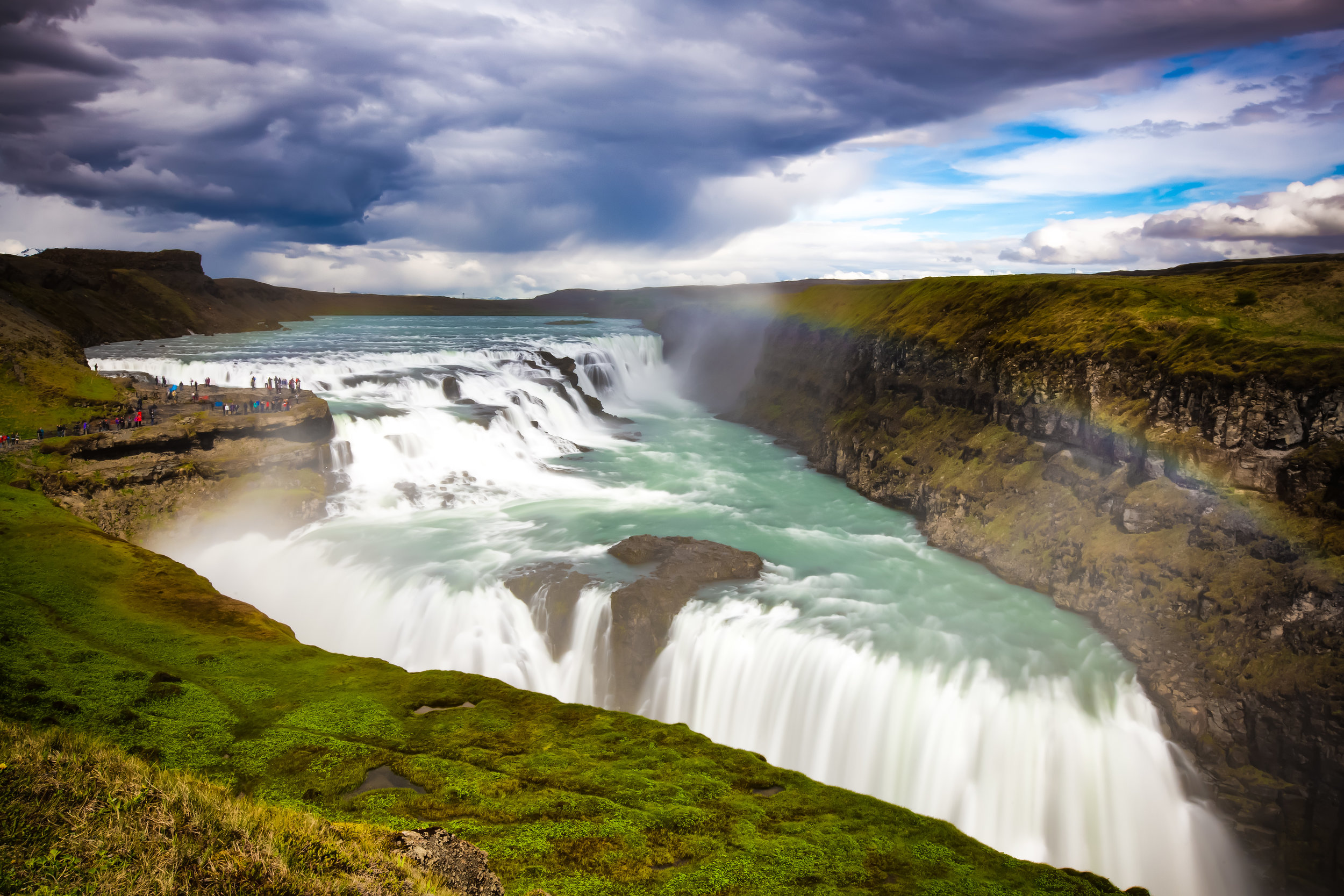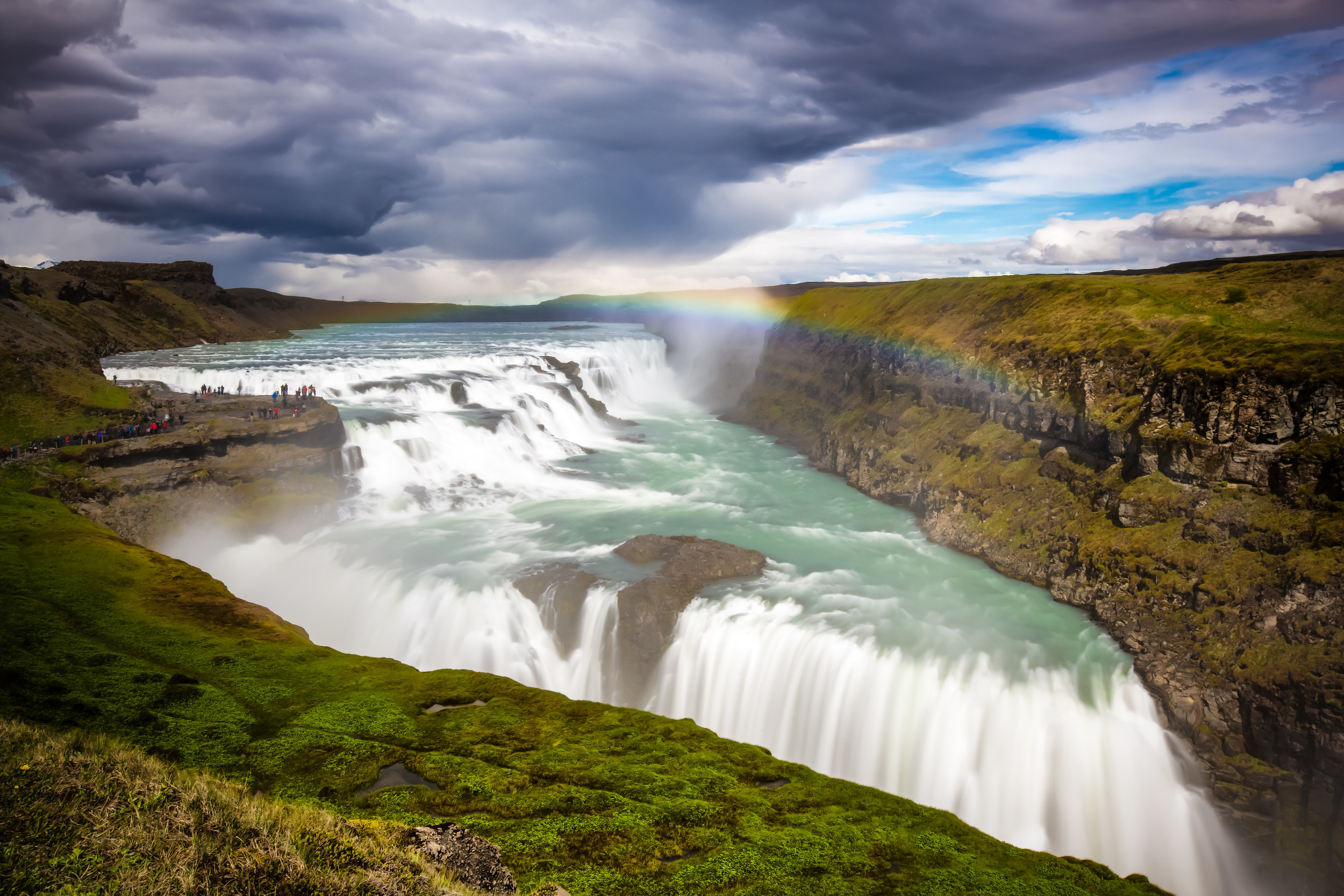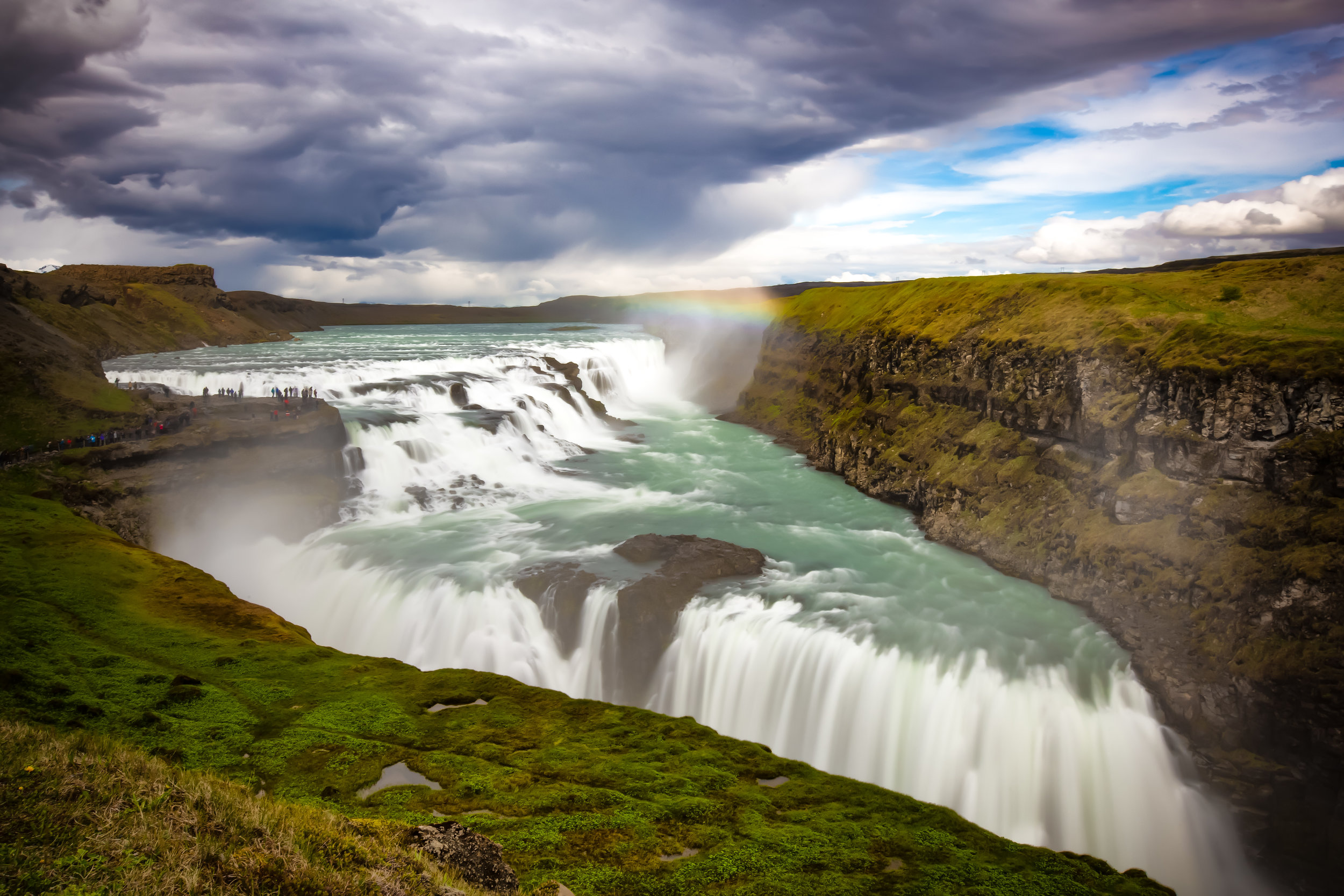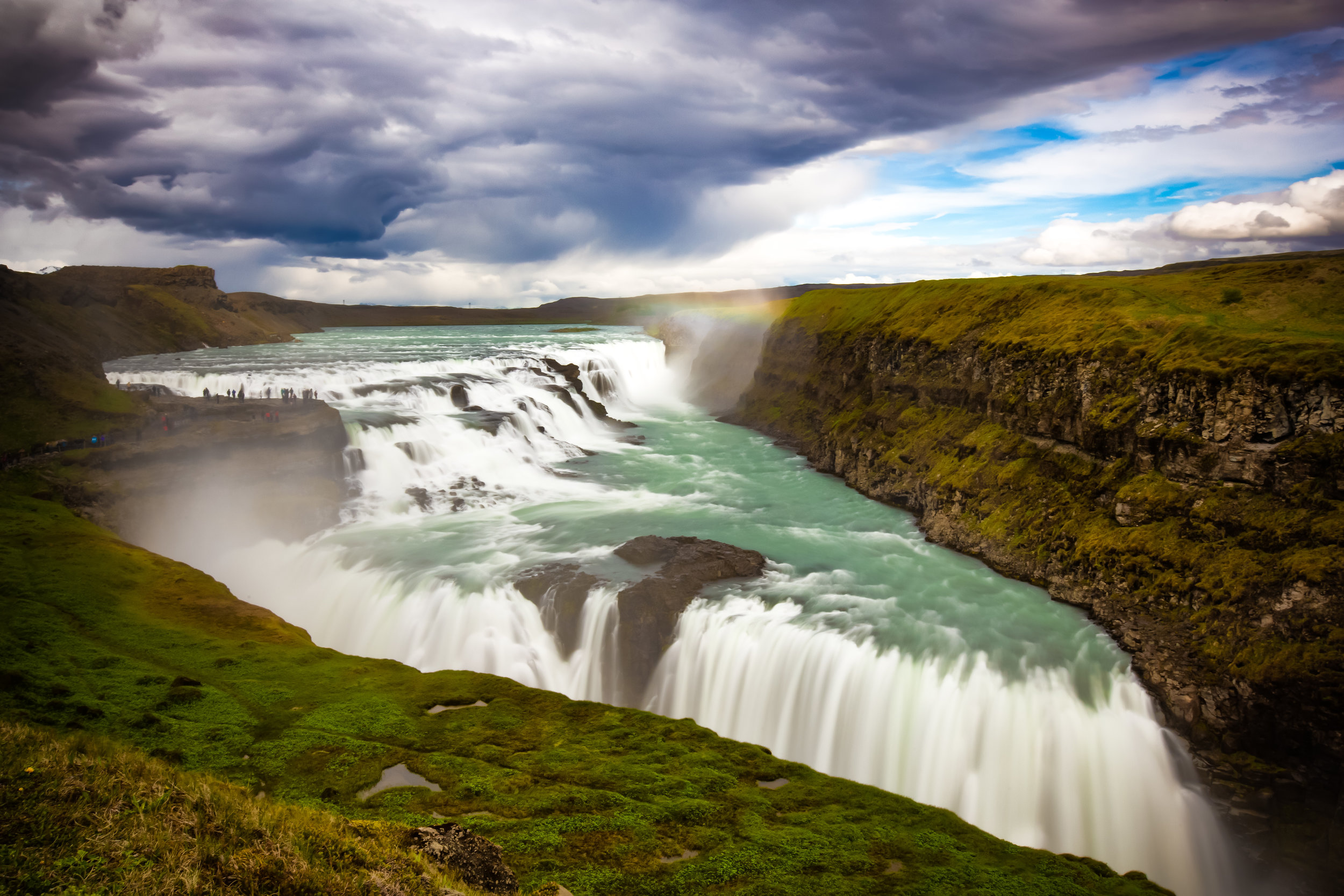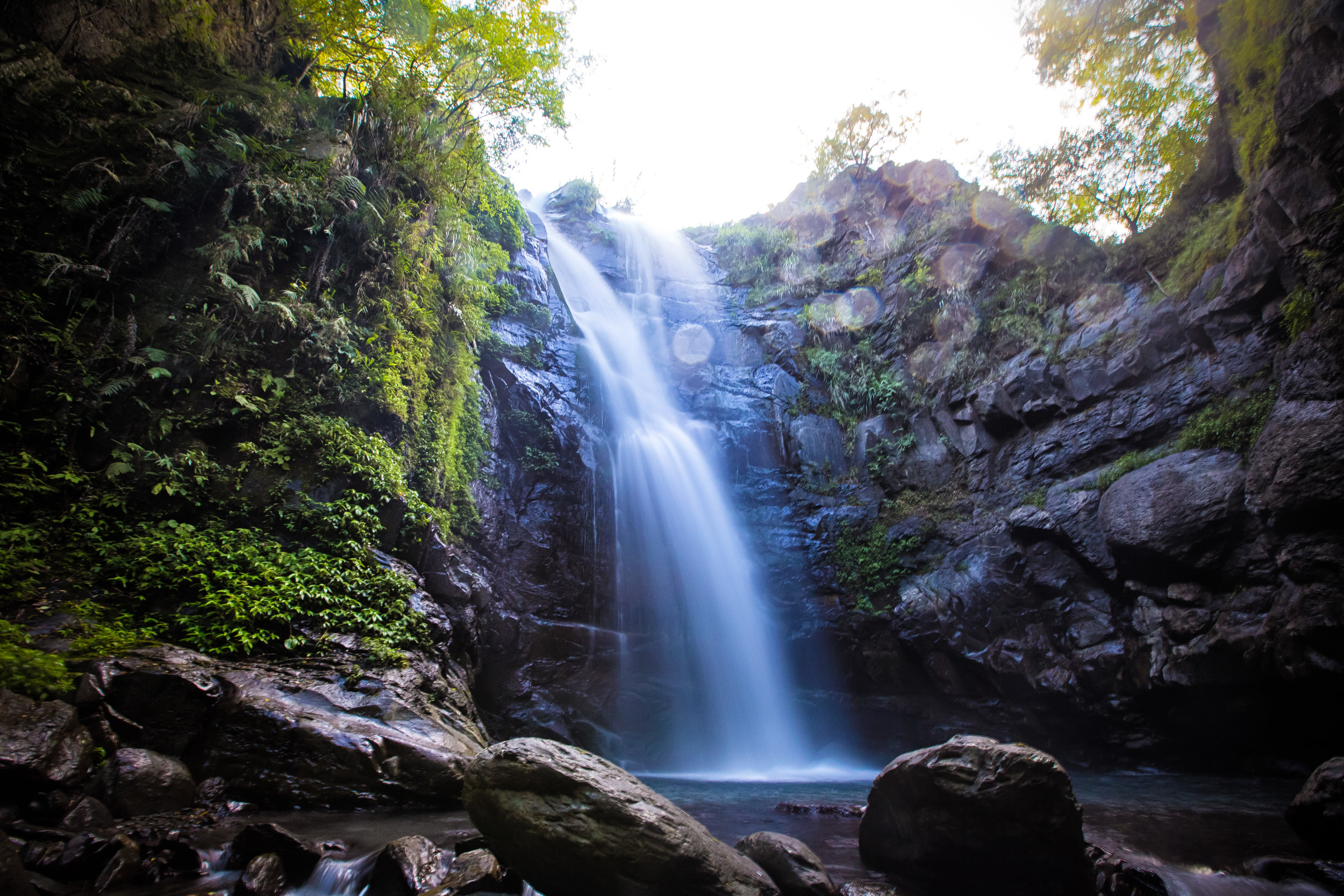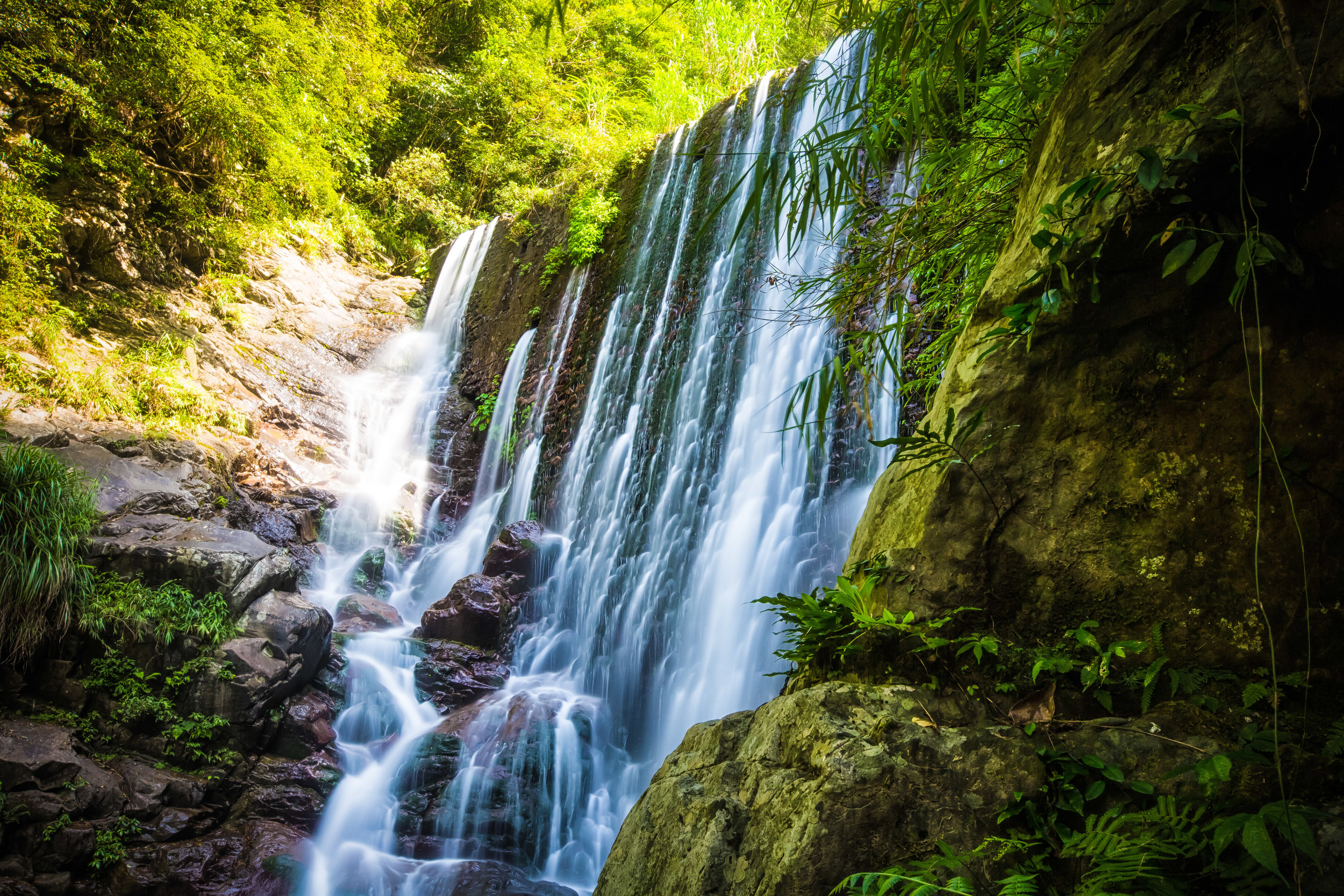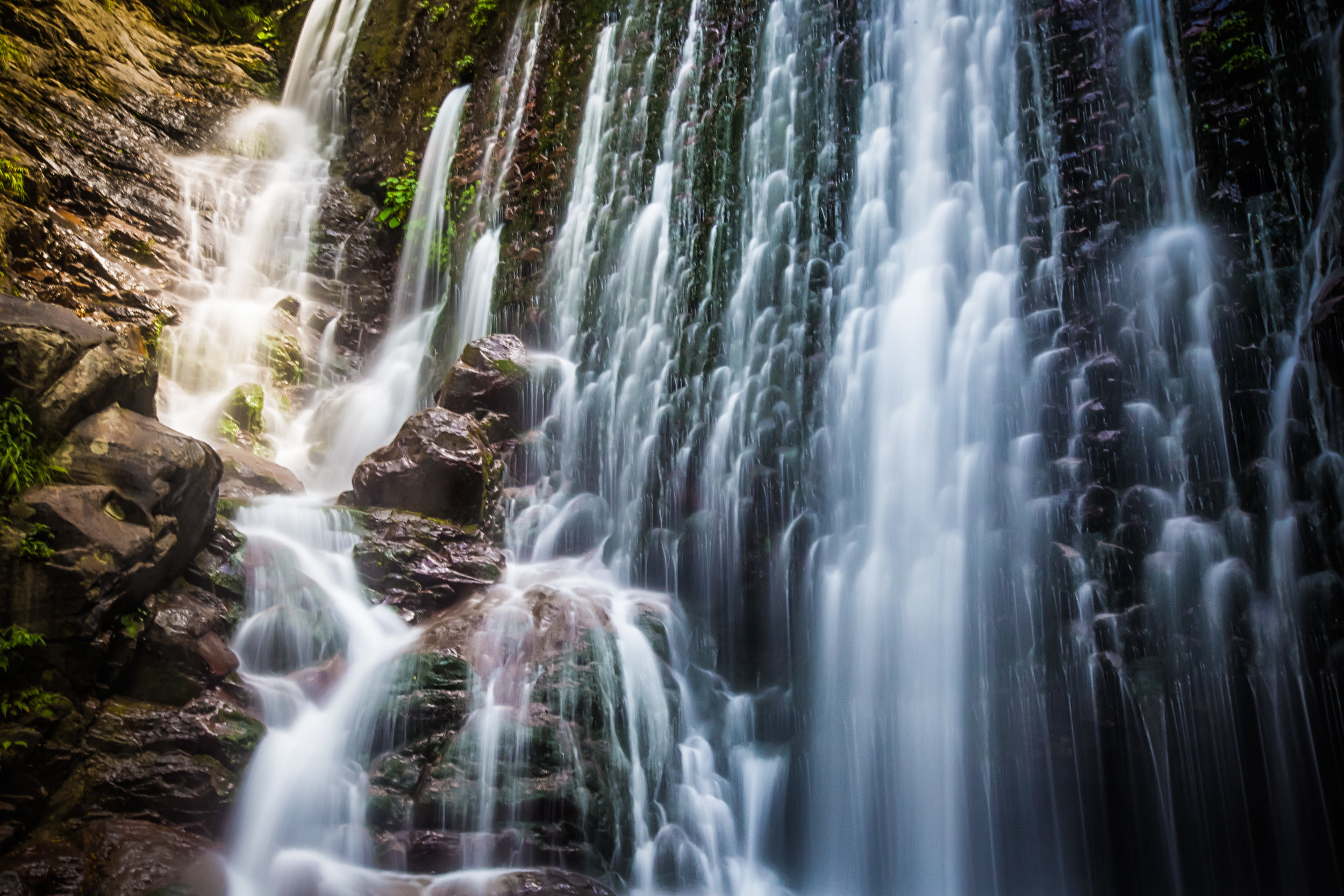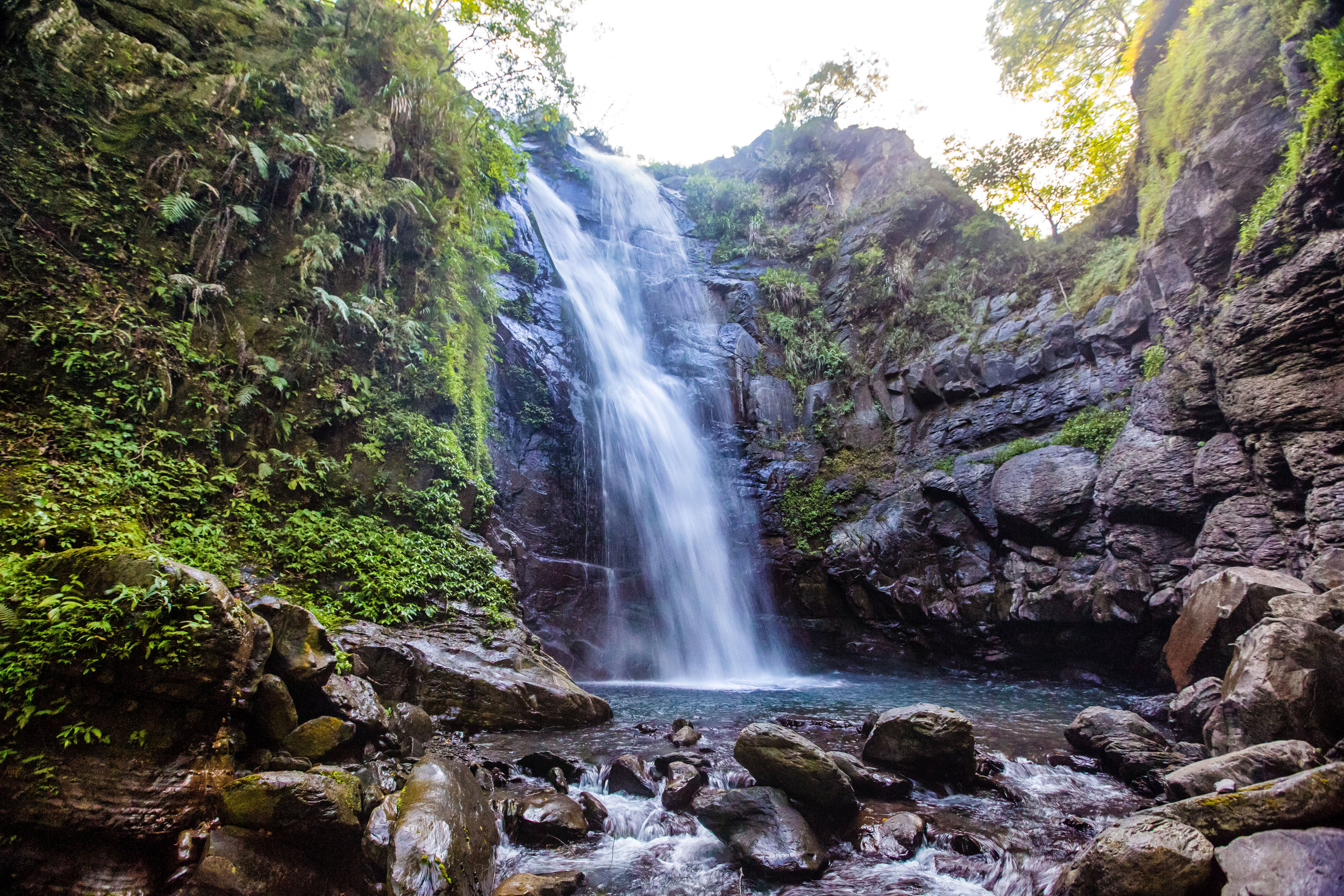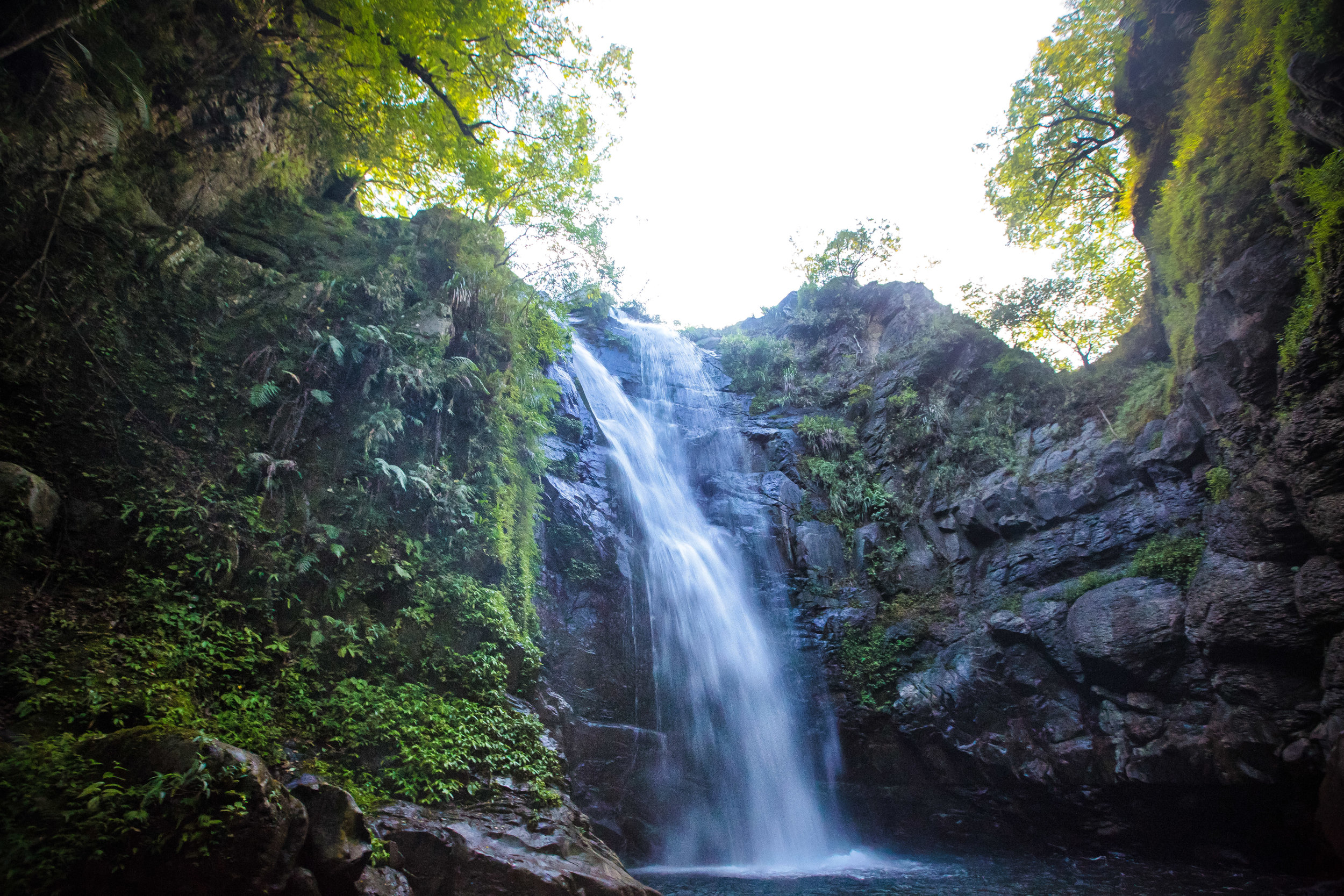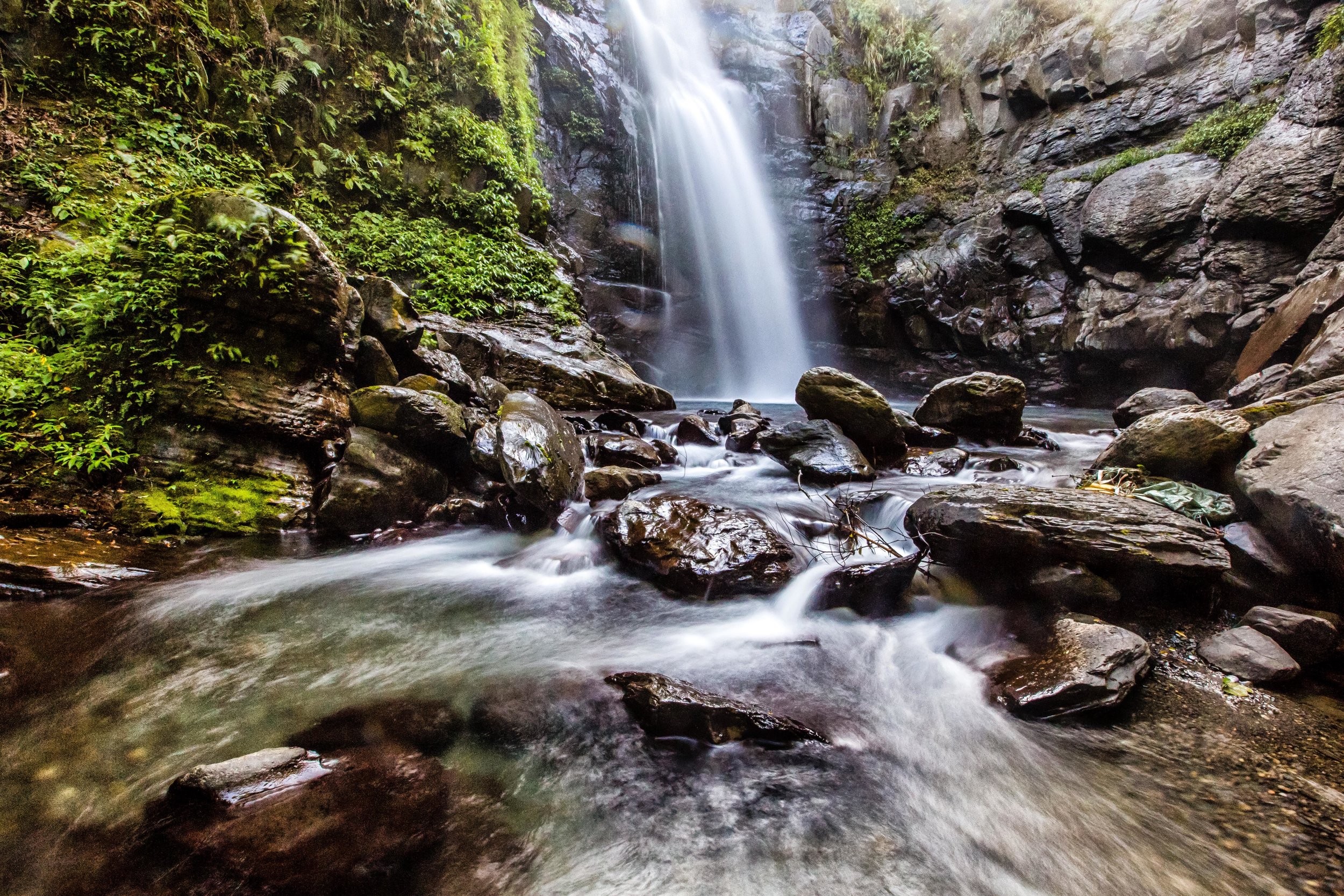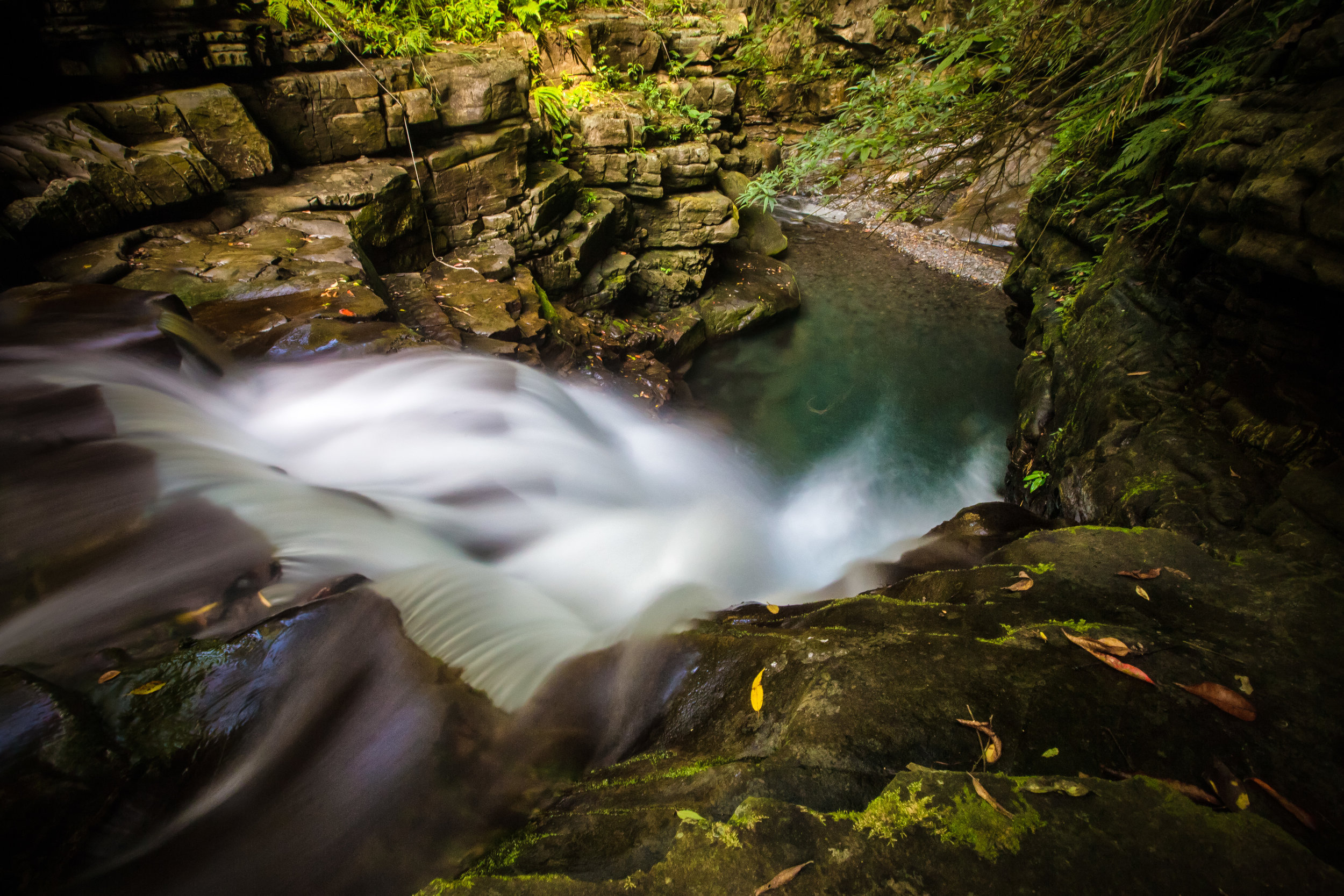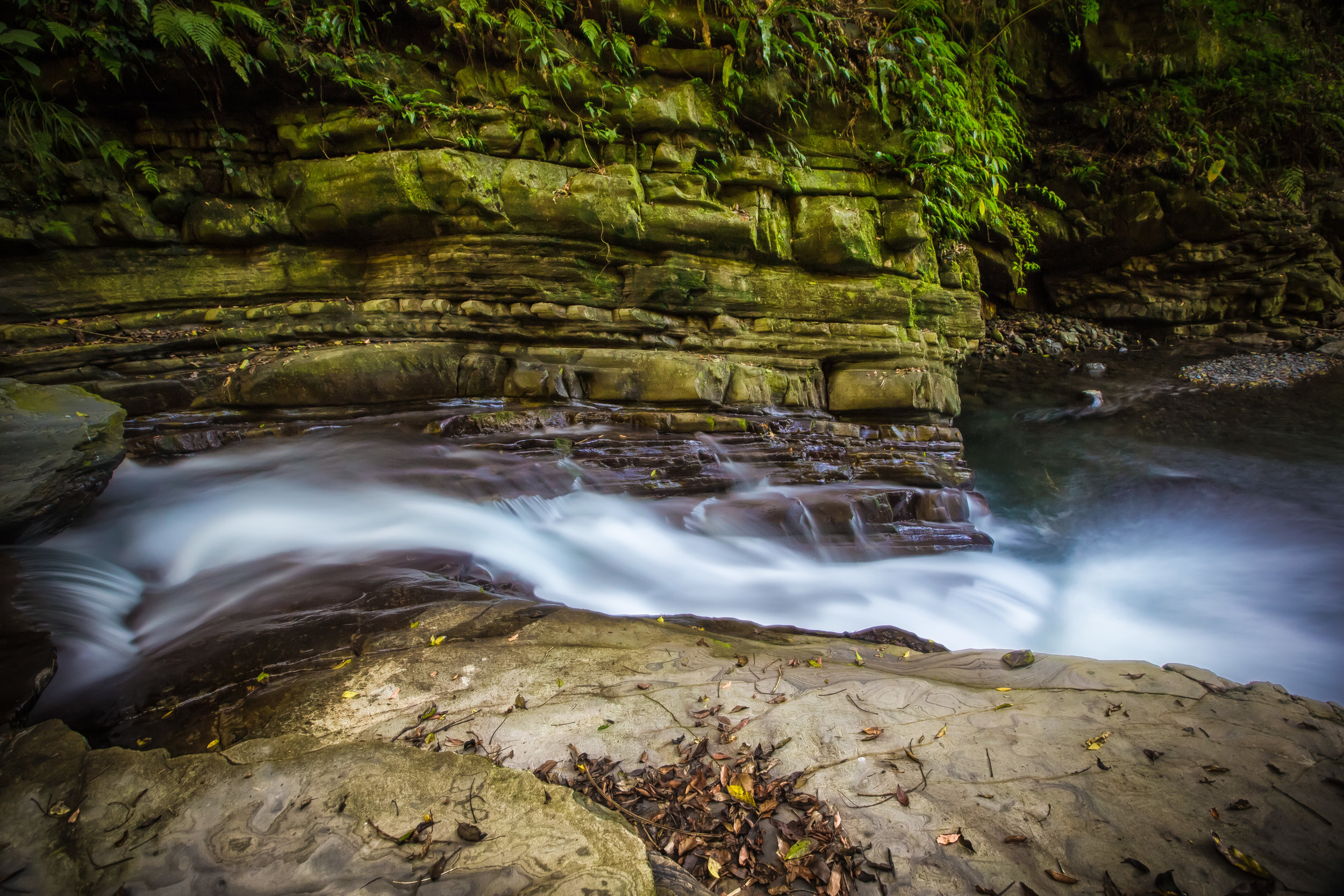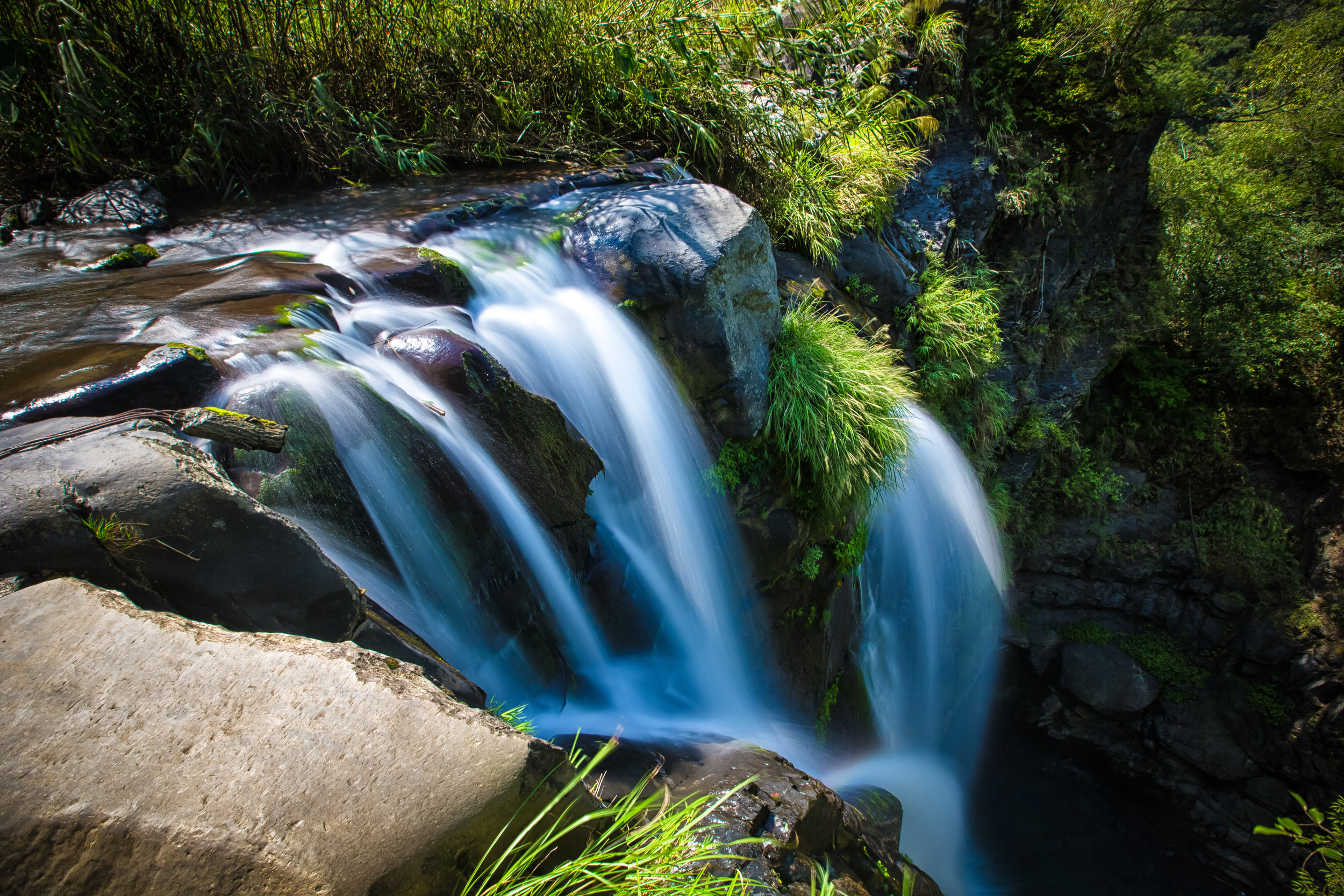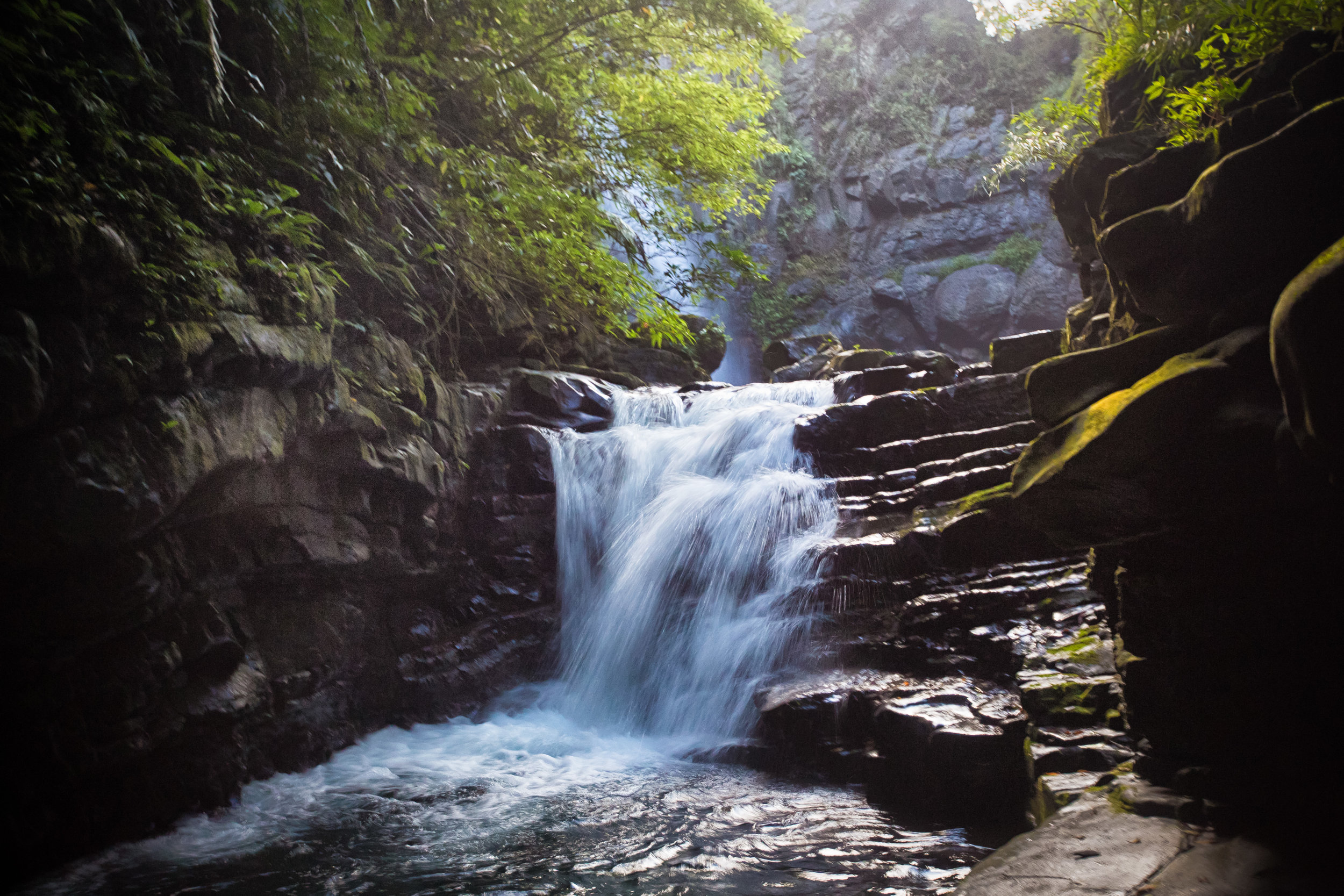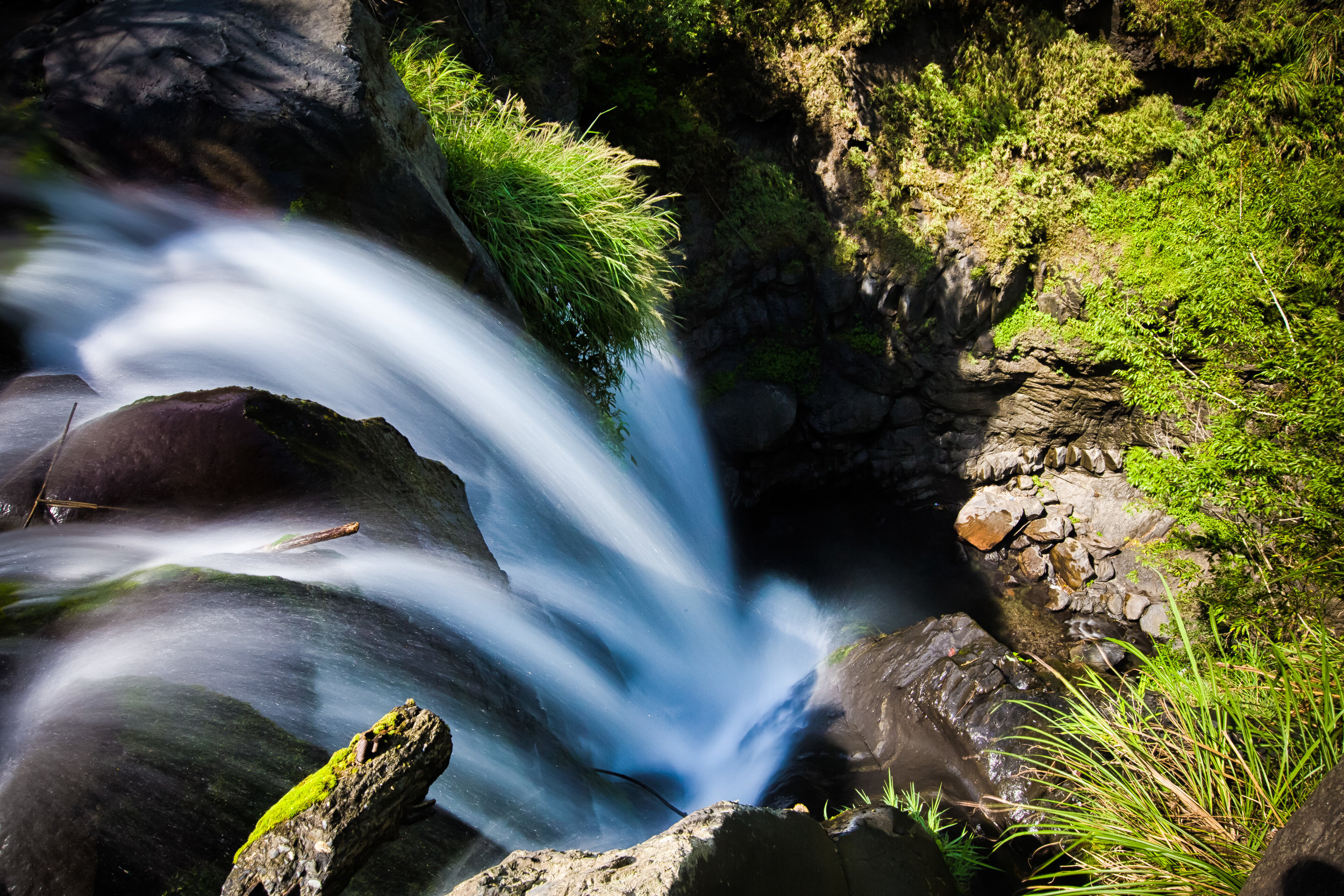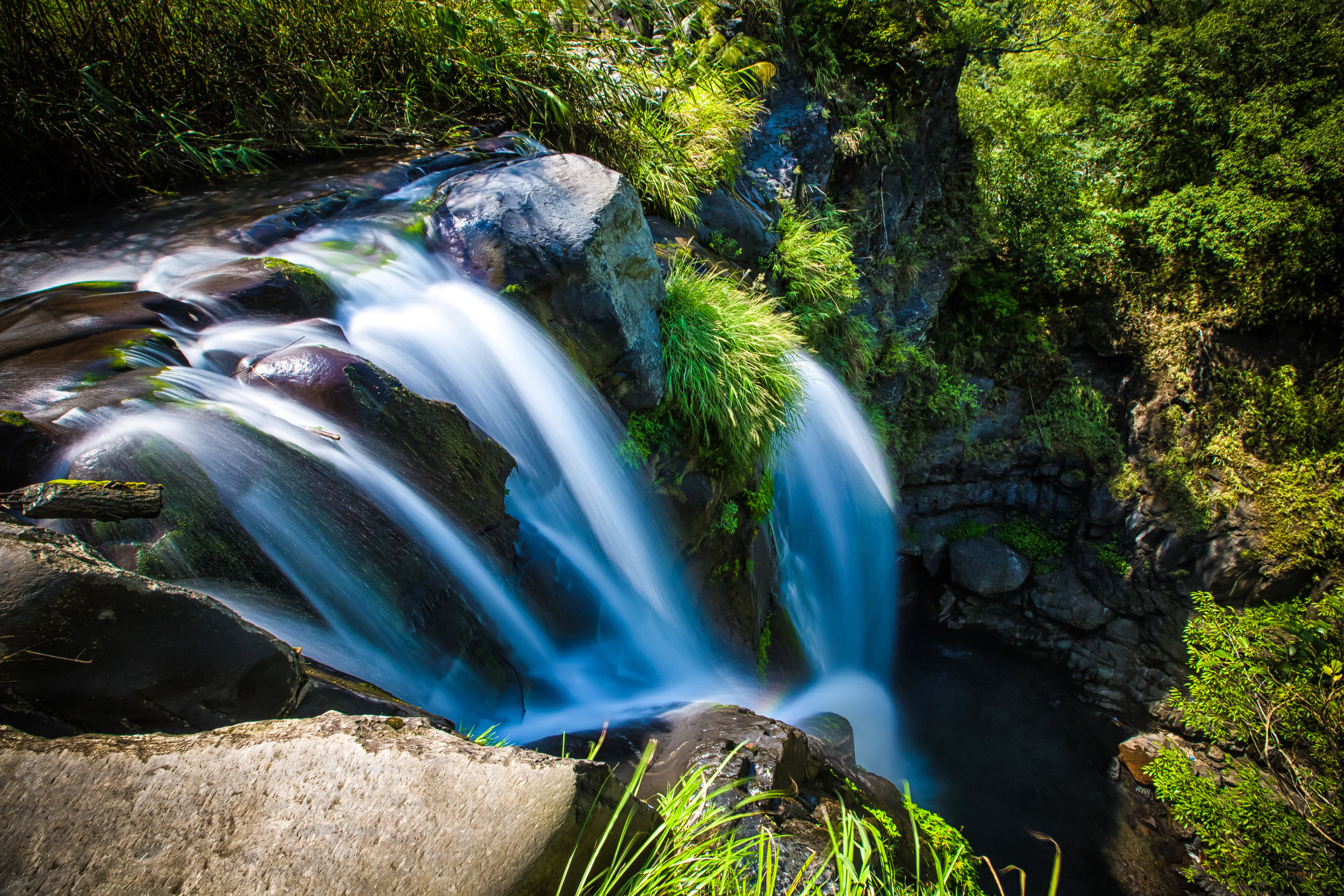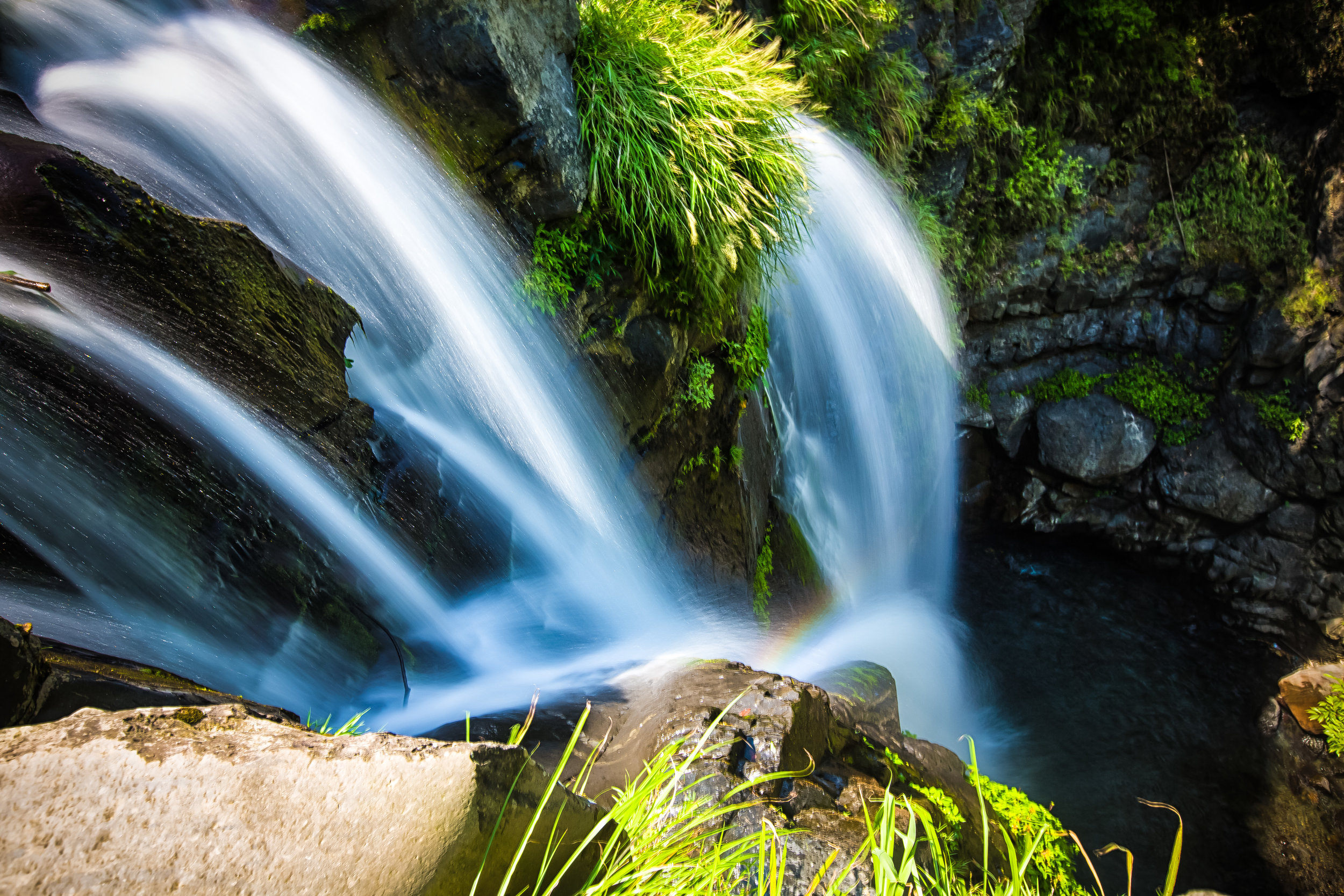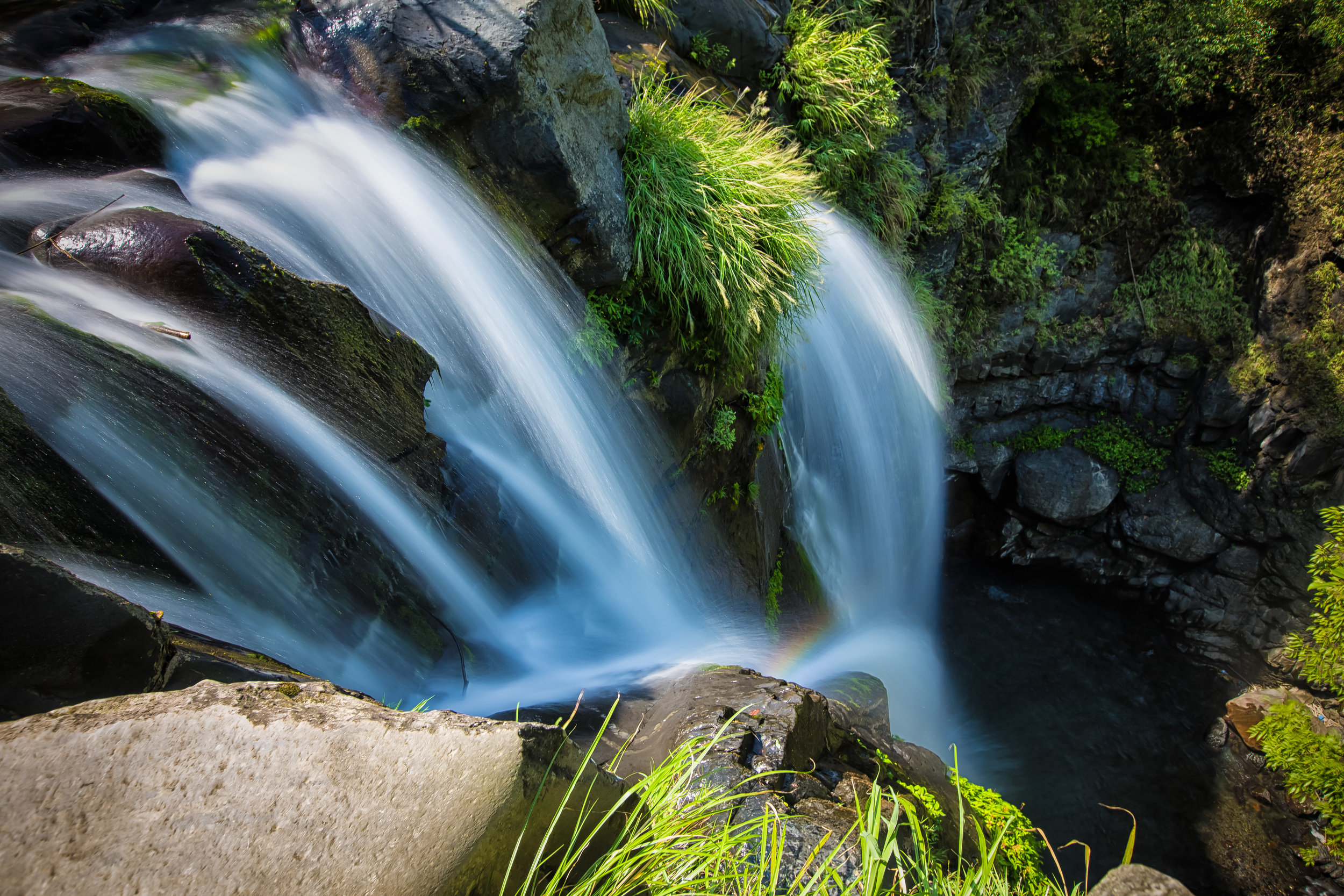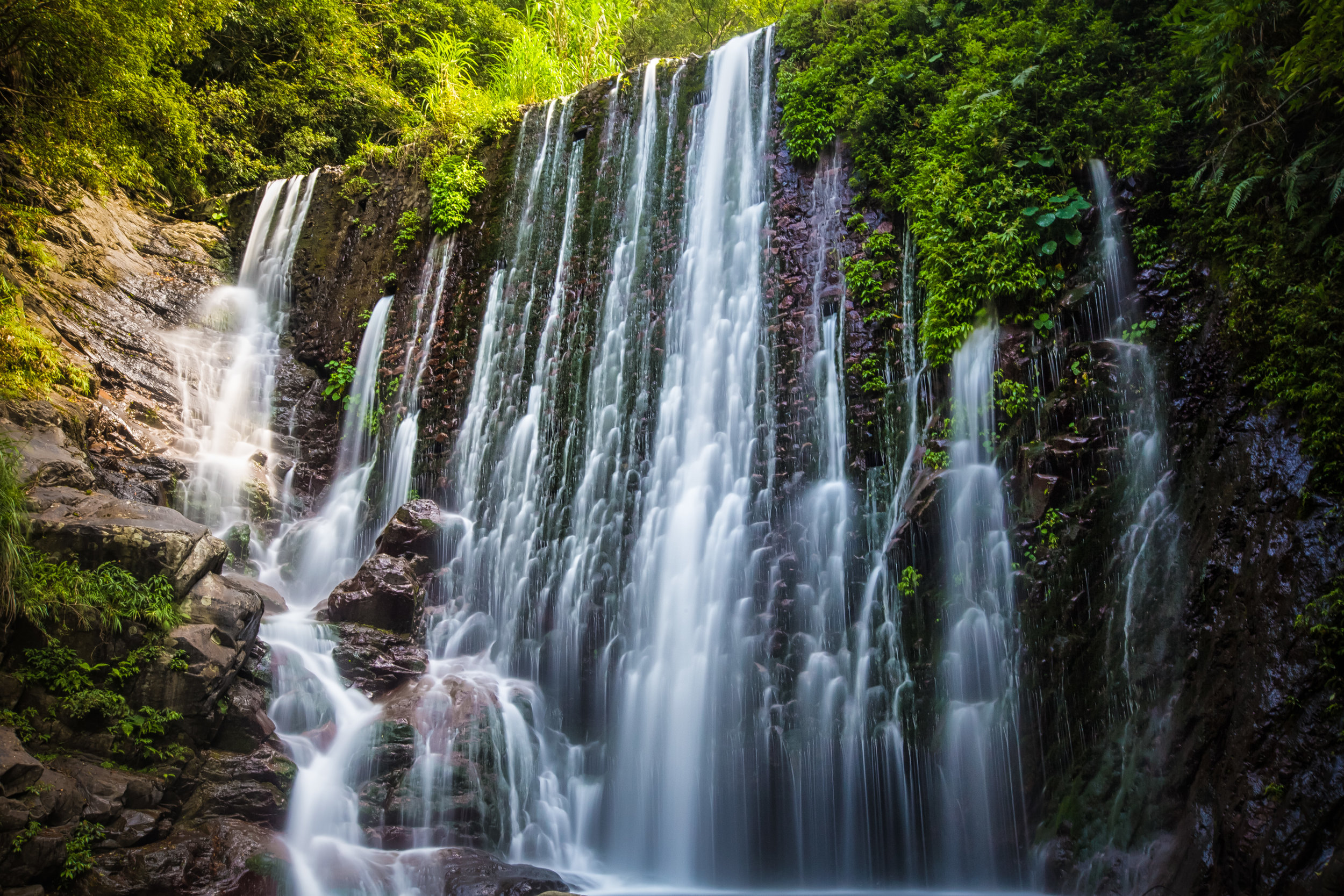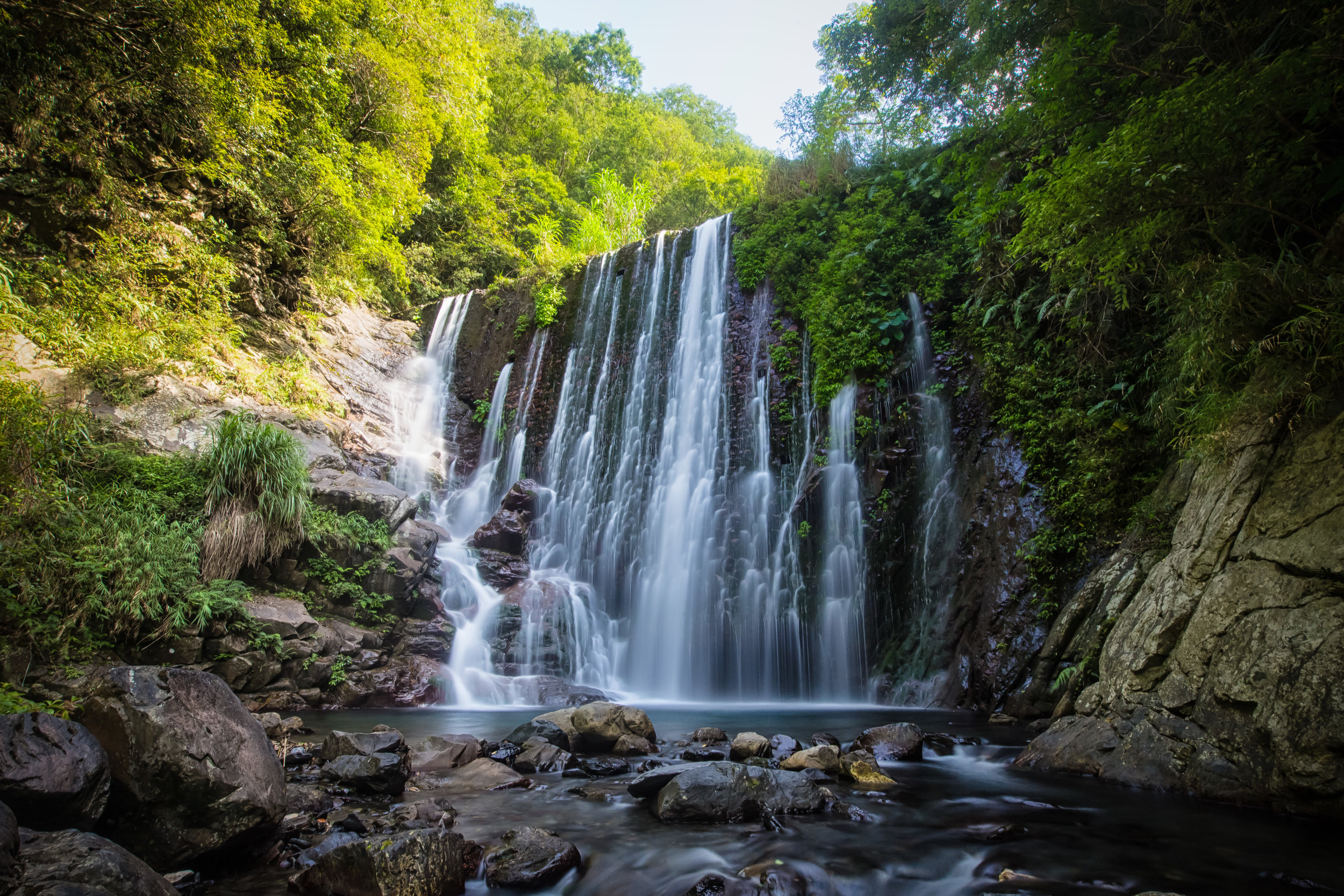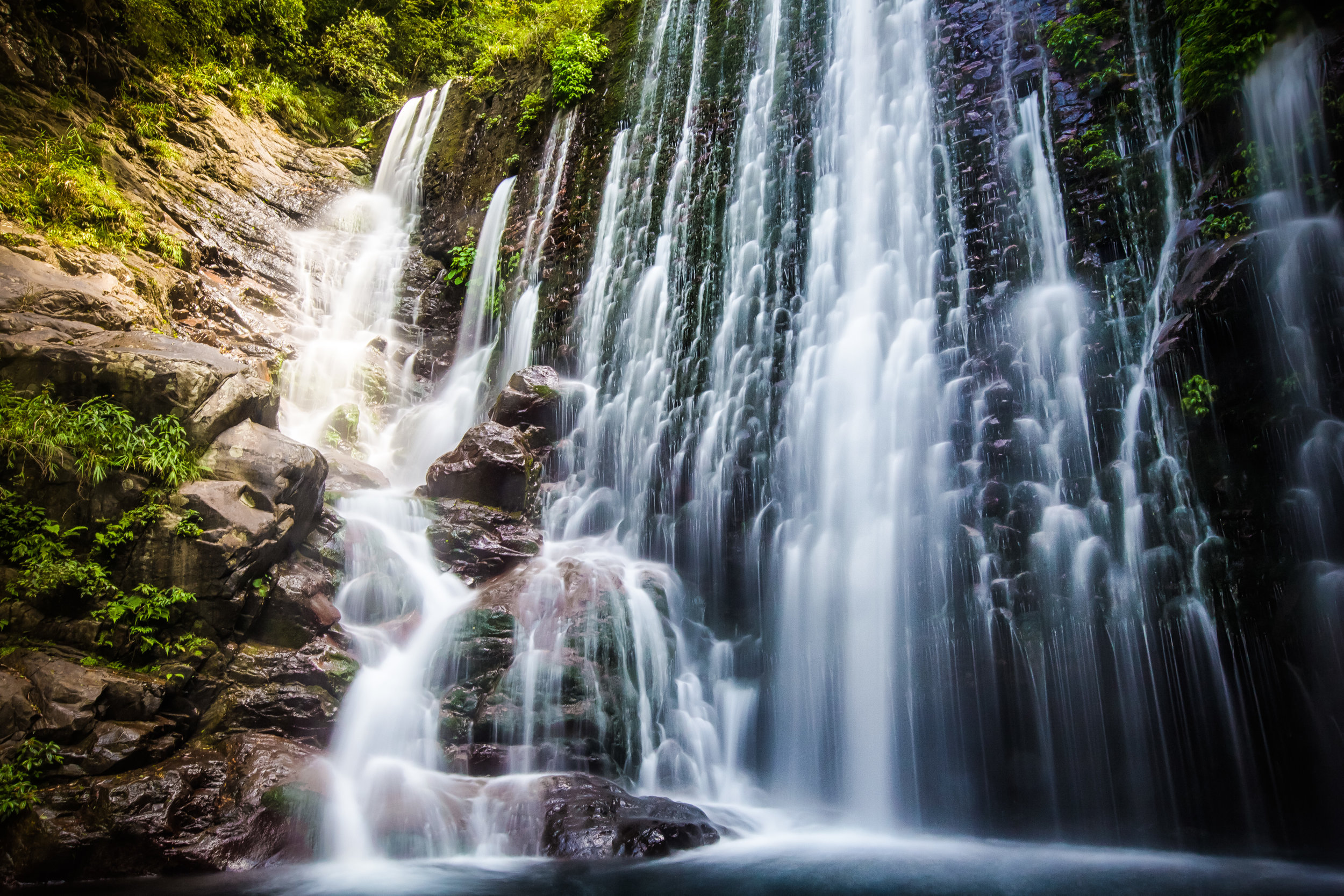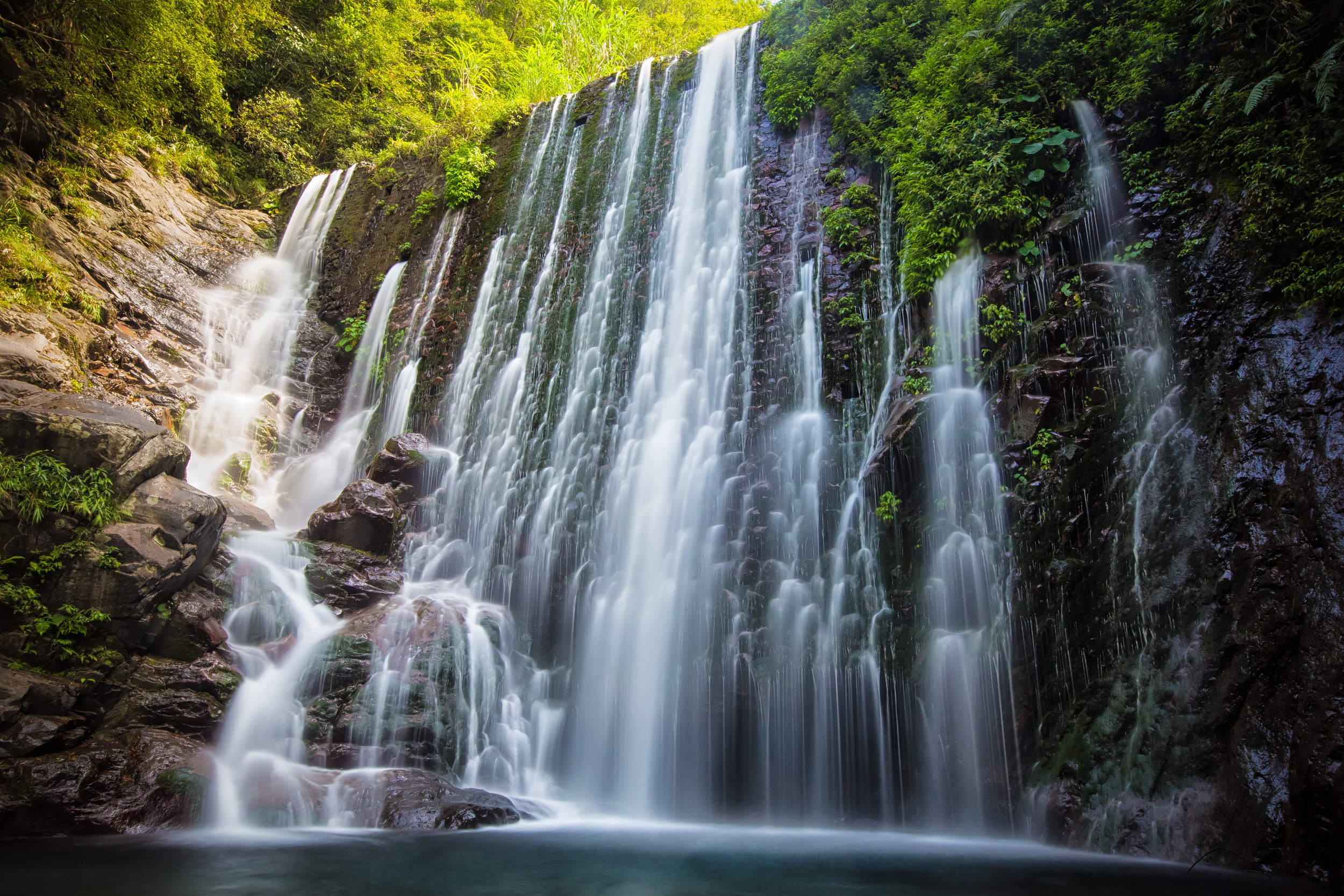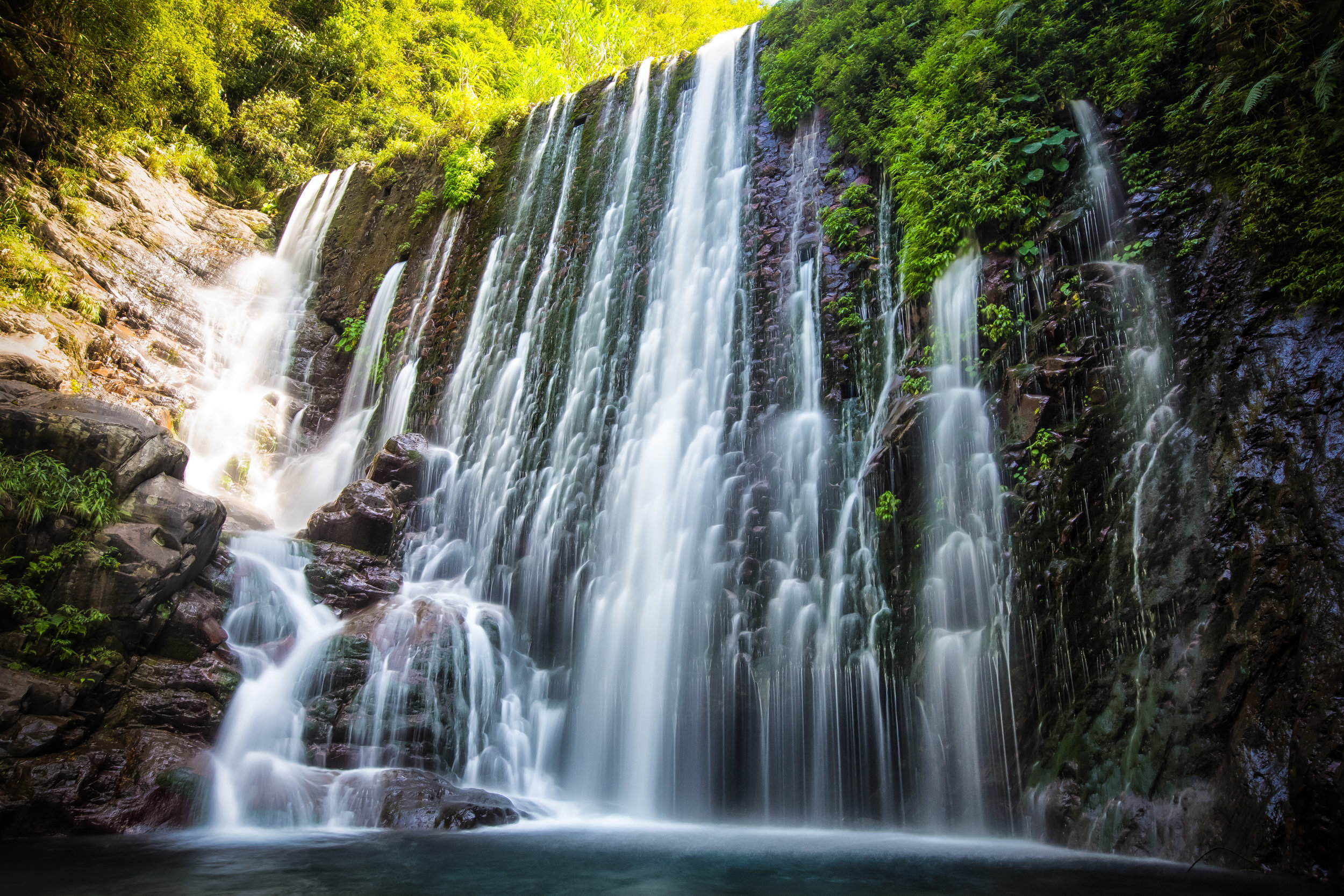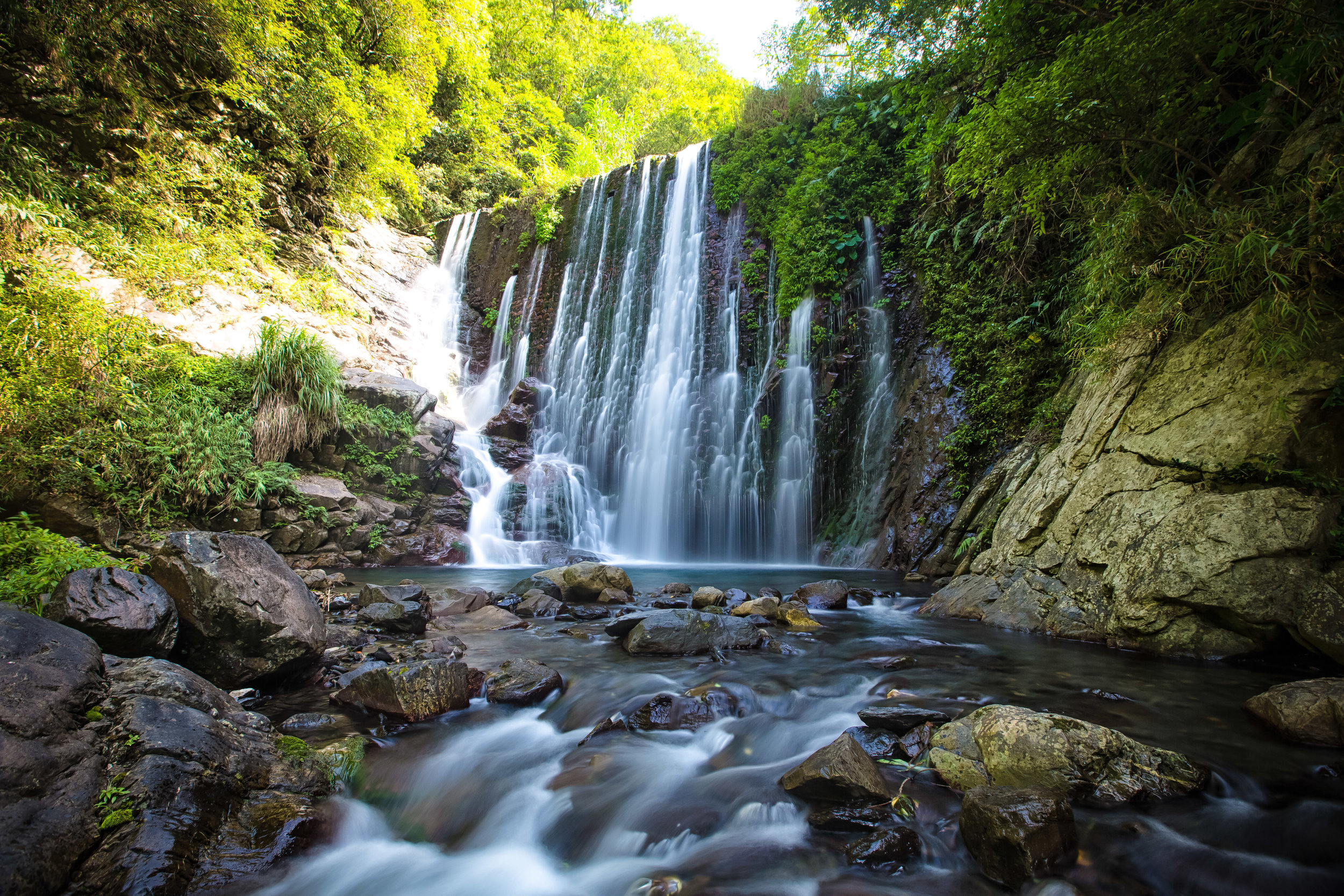Not every tourist who visits Iceland has the time to take a road trip around the entire country - So, for those with limited time, the Golden Circle day trip is one of the best solutions for an excursion out of Reykjavík offering visitors a sampling of the beauty of Iceland’s natural environment.
There are a number of options for travellers to tour the Golden Circle, so whether your rent a car, hire a taxi, or get yourself a spot on a tour bus, you’ll easily be able to see all of the beautiful sights that the Golden Circle has to offer in a day.
After visiting the beautiful Öxaráfoss waterfall in Iceland’s iconic and historic Þingvellir National Park and stopping by Geysir Geothermal Park to see the spectacular Strokkur geyser it’s time to move on to to what is likely to be the highlight of your day - The iconic “Golden Waterfall.”
Gullfoss
The majestic Gullfoss waterfall, located in southwest Iceland’s Hvítá River Canyon, is one of the largest and most powerful waterfalls in Iceland.
The water from the river originates high above from the Langjökull Glacier and is said to surge an estimated 140 cubic meters over the waterfall every second.
The total height of Gullfoss is 32 meters and is generally measured in two different stages:
The first stage is a shorter cascade waterfall that is about 11 meters (36 feet) in height.
The second stage is about 21 meters (69 feet) in height.
Likewise, the width of the waterfall is divided into two stages:
The upper left side of the waterfall stretches to around 243 meters (800 feet) at its crest.
The lower right side portion of the falls is half that size at 120 meters (400 feet).
There is an interesting bit of history related to Gullfoss which helped to spark an early environmental movement seeking to protect Iceland’s natural environment from over-development.
Gullfoss was originally the property of a man named Tómas Tómasson who was approached in the early 20th century by foreign investors seeking to harness the power of the falls to generate electricity. Tómasson was initially hesitant to sell the land but later compromised and decided to lease it out.
Tómasson‘s daughter, a woman named Sigriður Tómasdóttir vigorously opposed the usage of the waterfall for this sort of development, which she believed would cause irreparable damage to Gullfoss.
Using her savings to hire a lawyer in the capital, she spent several years engaged in a lawsuit with the investors attempting to prevent them from ruining the waterfall. Even though she would fail in her legal attempts to save the land, the original lease expired before any construction took place.
In 1940, the waterfall was acquired from Tómasson by Sigriður‘s adopted son who later sold it to the Icelandic government which in turn designated the area as a protected nature reserve.
Sigriður’s struggle to preserve the waterfall inspired the people of Iceland to take the issue of protecting their country’s natural environment more seriously and the world is a better place today thanks to her efforts.
While visiting Gullfoss you’ll find a small monument in honour of her efforts.
Photography
The biggest obstacle to taking photos of the waterfall (and this applies to most of the waterfalls in Iceland) is that if you’re too close both you and your camera are going to get wet thanks to the mist that constantly engulfs the surrounding area.
Photographers should be prepared to protect your camera and lenses from the spray, especially if you are planning on taking long exposure photos.
There are various view-points set up around waterfall for people to take photos as well as a well-developed and (more importantly) safe walking trail that allows people to get as close to the falls as possible.
Most of the shots that you will have seen of the waterfall will have been taken from a viewpoint near the lower parking lot with the use of a telephoto lens. This area is where you can get the widest view of the falls and are also safest from the mist.
If you prefer to get closer to the falls, there is a walking trail that will bring you next to the top cascade where both you and your camera will undoubtedly get a bit wet. The experience of being so close to such a powerful force of nature though is highly worth the walk.
Depending on the time of the year you visit, the mist may not be the only factor that makes taking photos of the waterfall difficult - During the high season for tourists, you are likely going to have to contend with having a bunch of people in your beautiful landscape shots.
As one of the most popular tourist destinations in Iceland, you may have to put up with sharing the waterfall with hundreds of other people. One of the best ways to combat this issue is to time your visit for very early or very late in the day.
Getting There
If you are following the popular Golden Circle route, Gullfoss is about a two-hour drive from the capital of Reykjavik. As mentioned above, most tourists will first stop at Öxaráfoss and then visit the Geysir Geothermal Park before arriving at Gullfoss. The waterfall is a 14km drive from Geysir and there are several signs along the route that point tourists in the right direction.
There are two parking lots (free of charge) for visitors to Gullfoss - The lower parking lot is not marked by a road sign and won’t show up on your GPS, but it is probably the best place to park your car.
The upper parking lot is next to a restaurant / cafe that serves a wide variety of Icelandic fare as well as having a gift shop where you can purchase some souvenirs.
After visiting Gullfoss, many people will continue on to one of the areas many hot springs, Faxi waterfall or Crater Kerið before heading back for the day.
If you’ve decided that you won’t bother renting a car while visiting Iceland, you’re going to have to rely on public transportation to get to the waterfall. There are tours out of the capital offered by tour groups like Reykjavik Excursions which offer tourists access to several different stops for around $100USD. It is important to remember that if you want to book a tour that you should do so well in advance as the seats on the daily tours tend to fill up quickly.
As one of the most iconic waterfalls in Iceland (as well as the whole of Europe) Gullfoss is an extremely busy tourist destination for anyone visiting Iceland. The waterfall is certainly one of the most beautiful that you’ll ever see and will undoubtedly be one of the highlights of your trip to Iceland.
Gallery / Flickr (High Res Photos)
